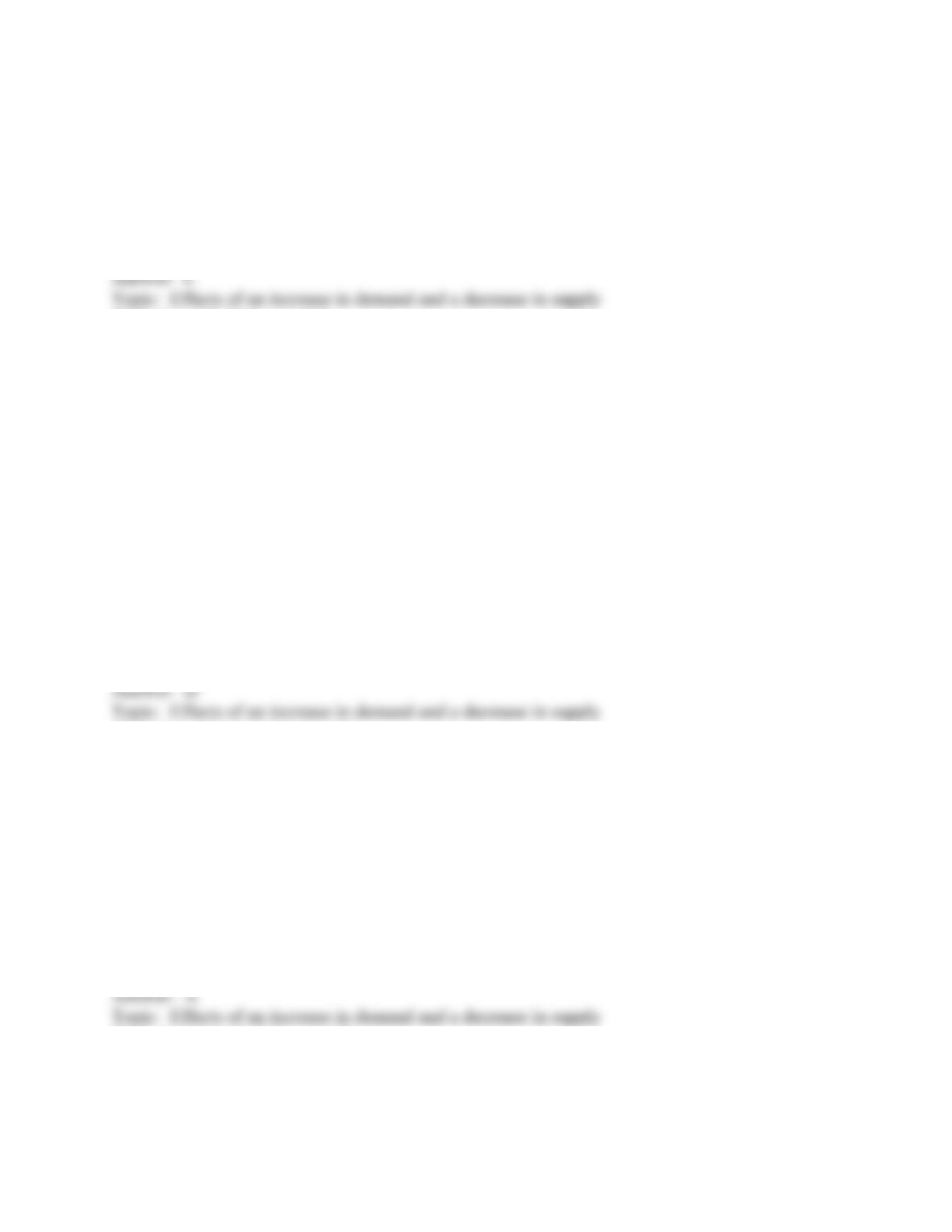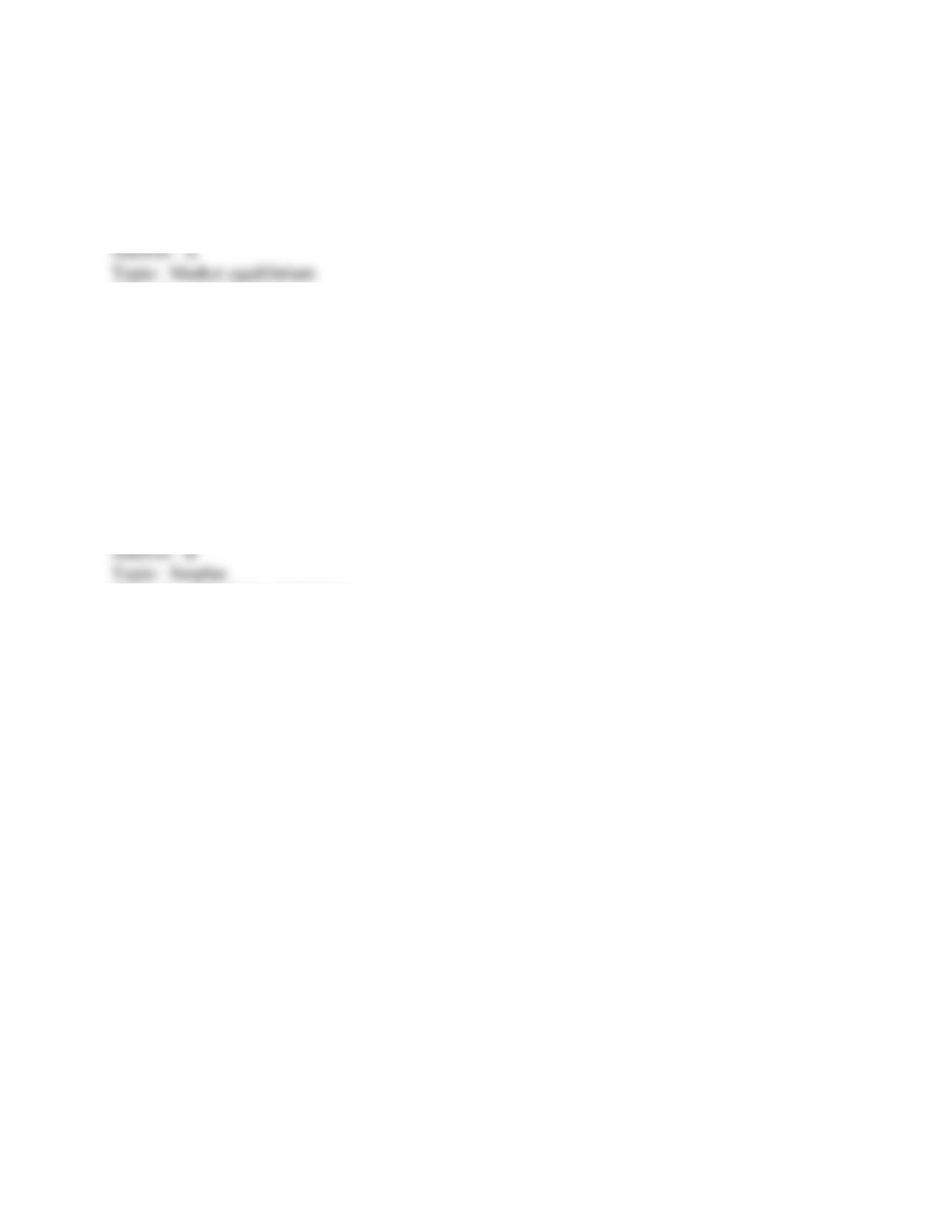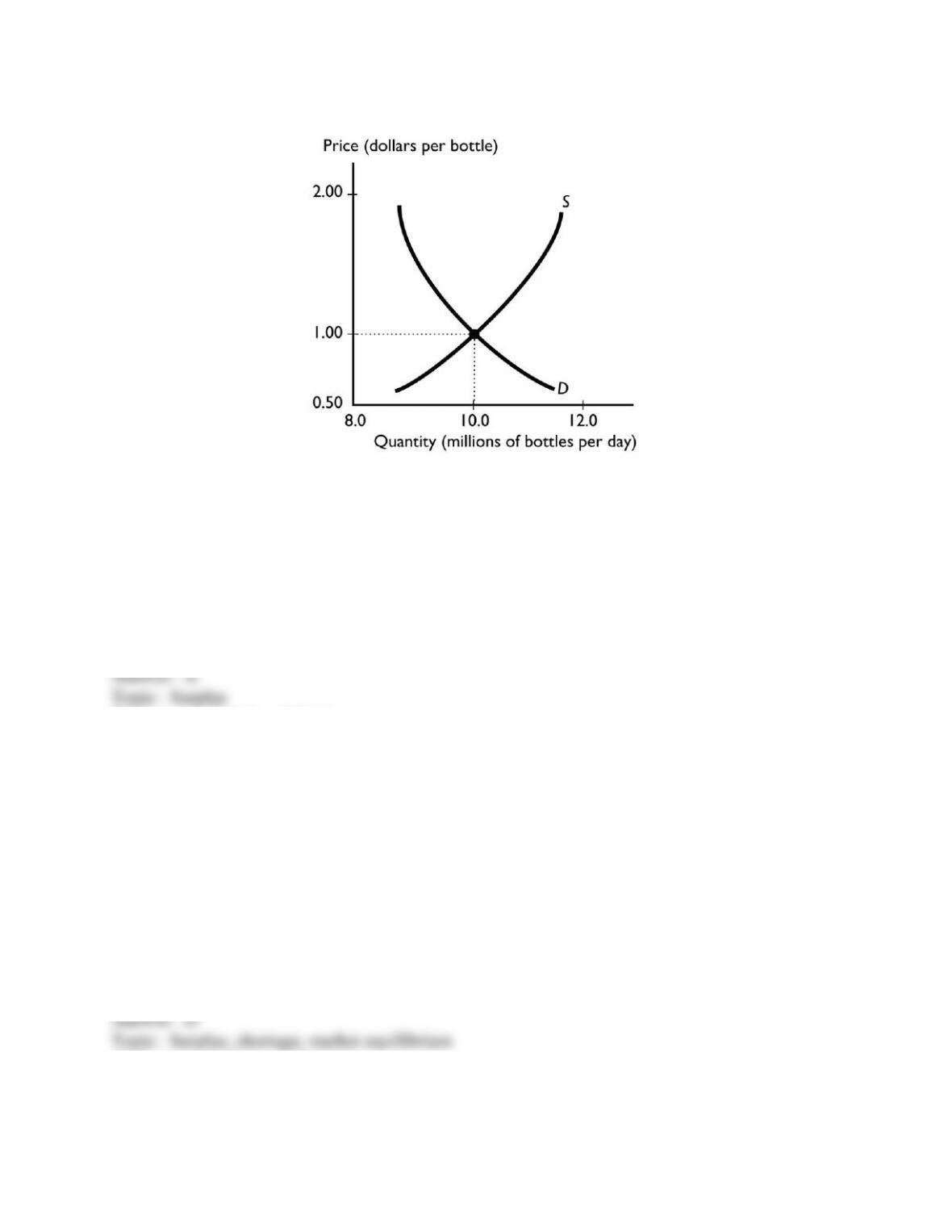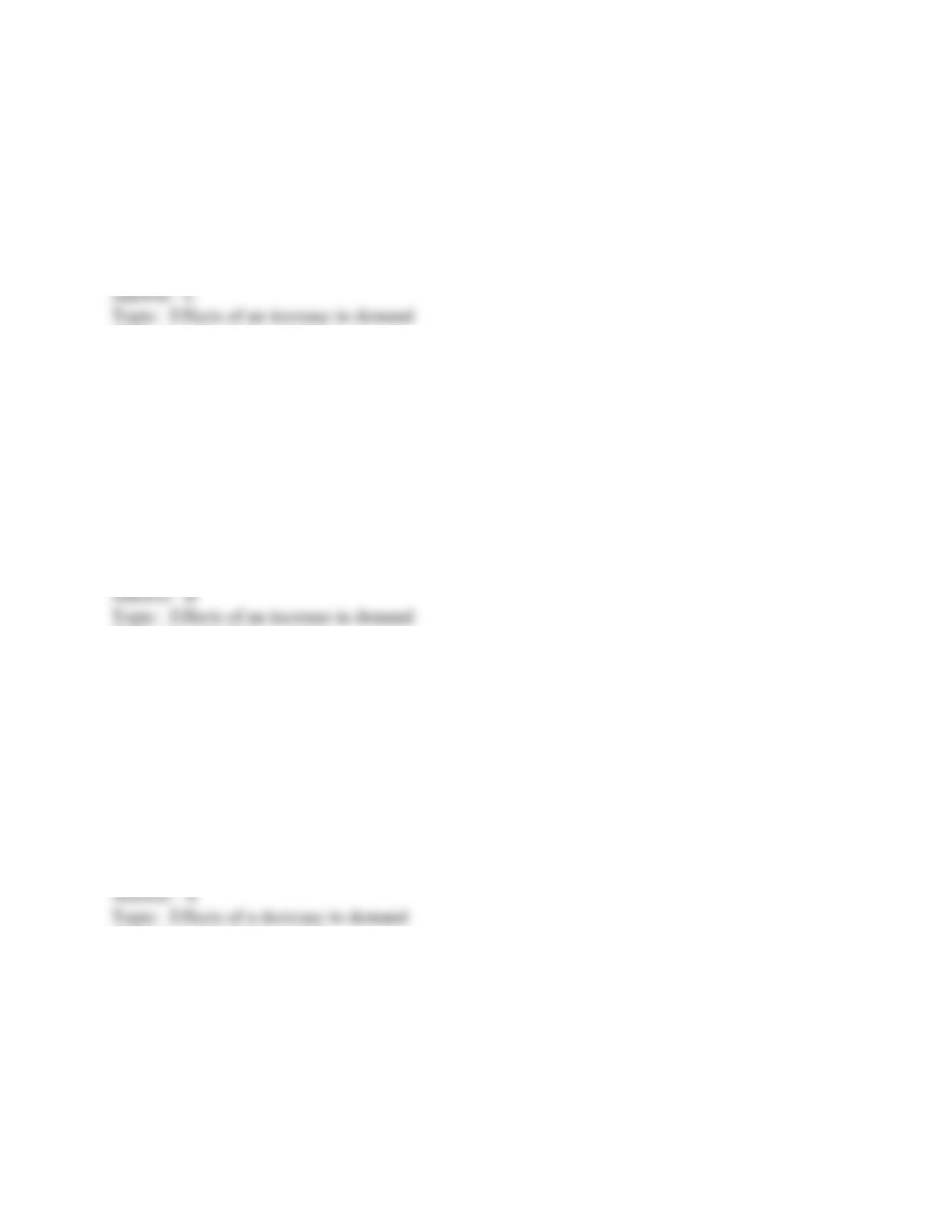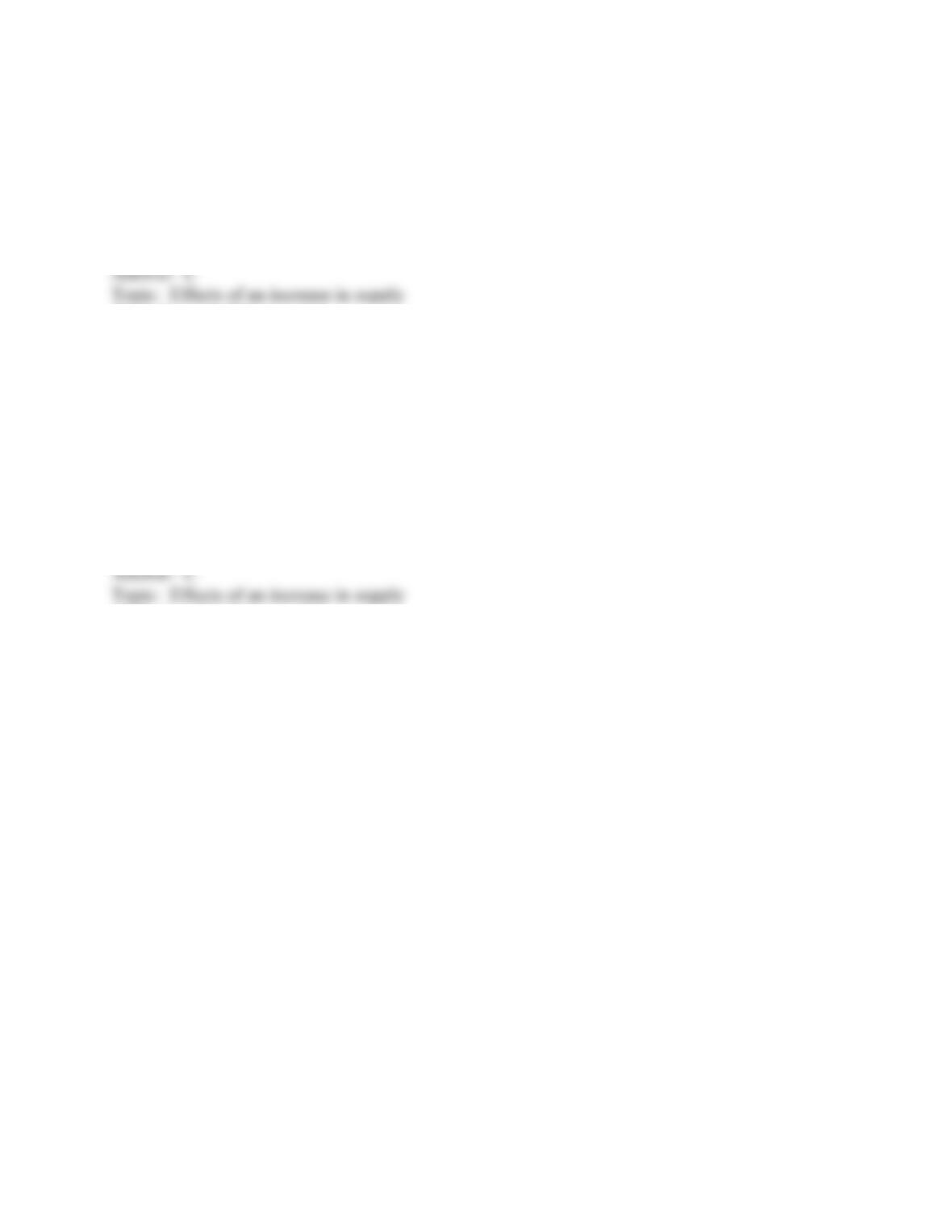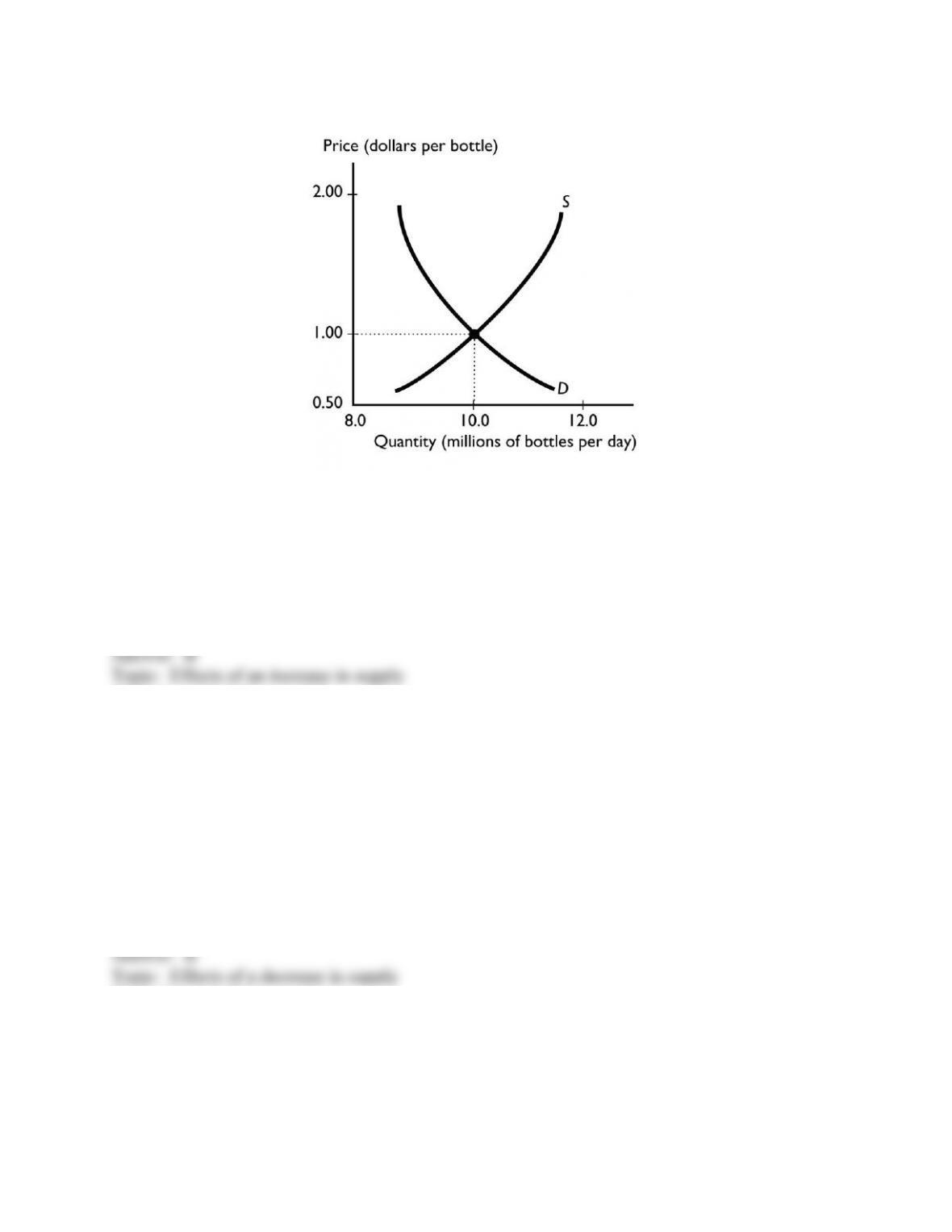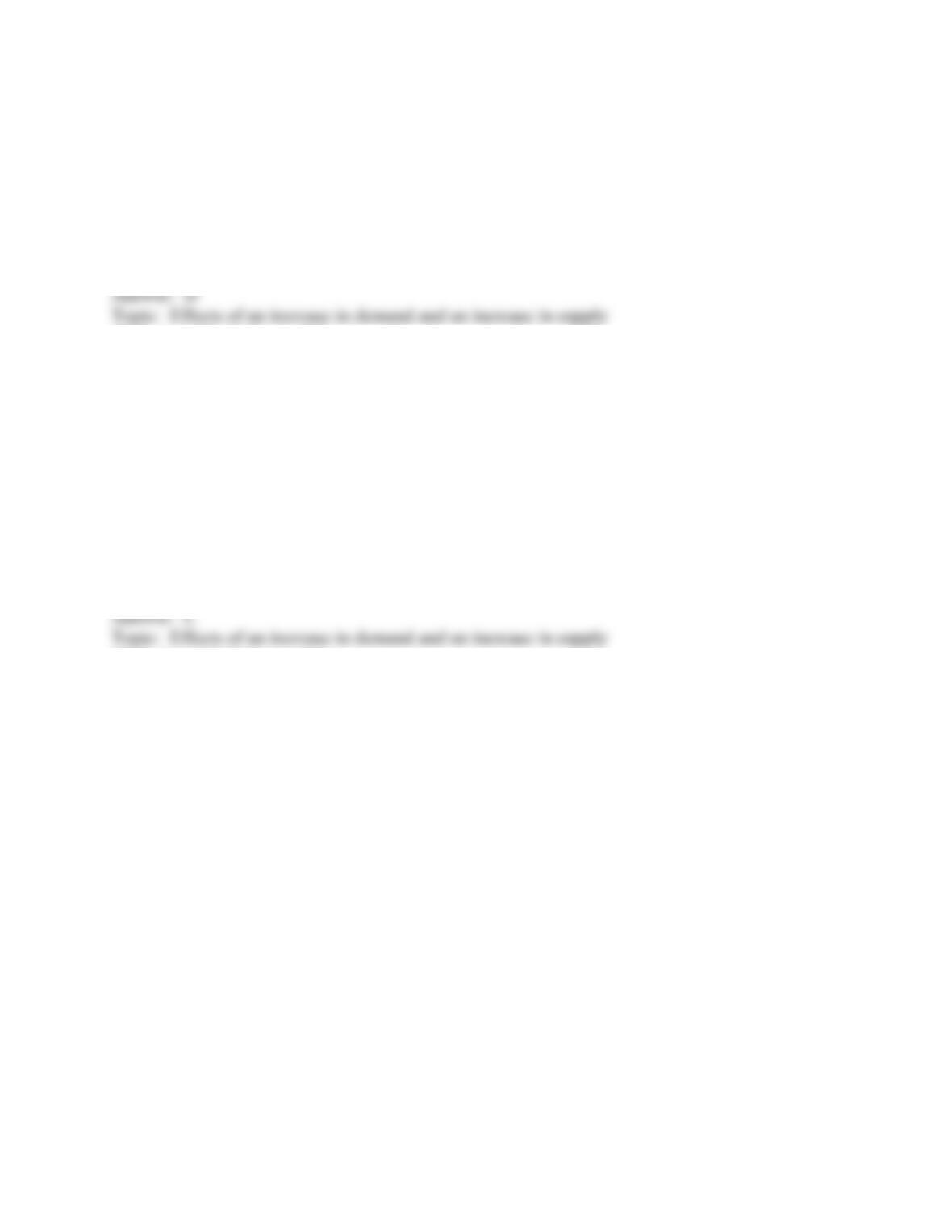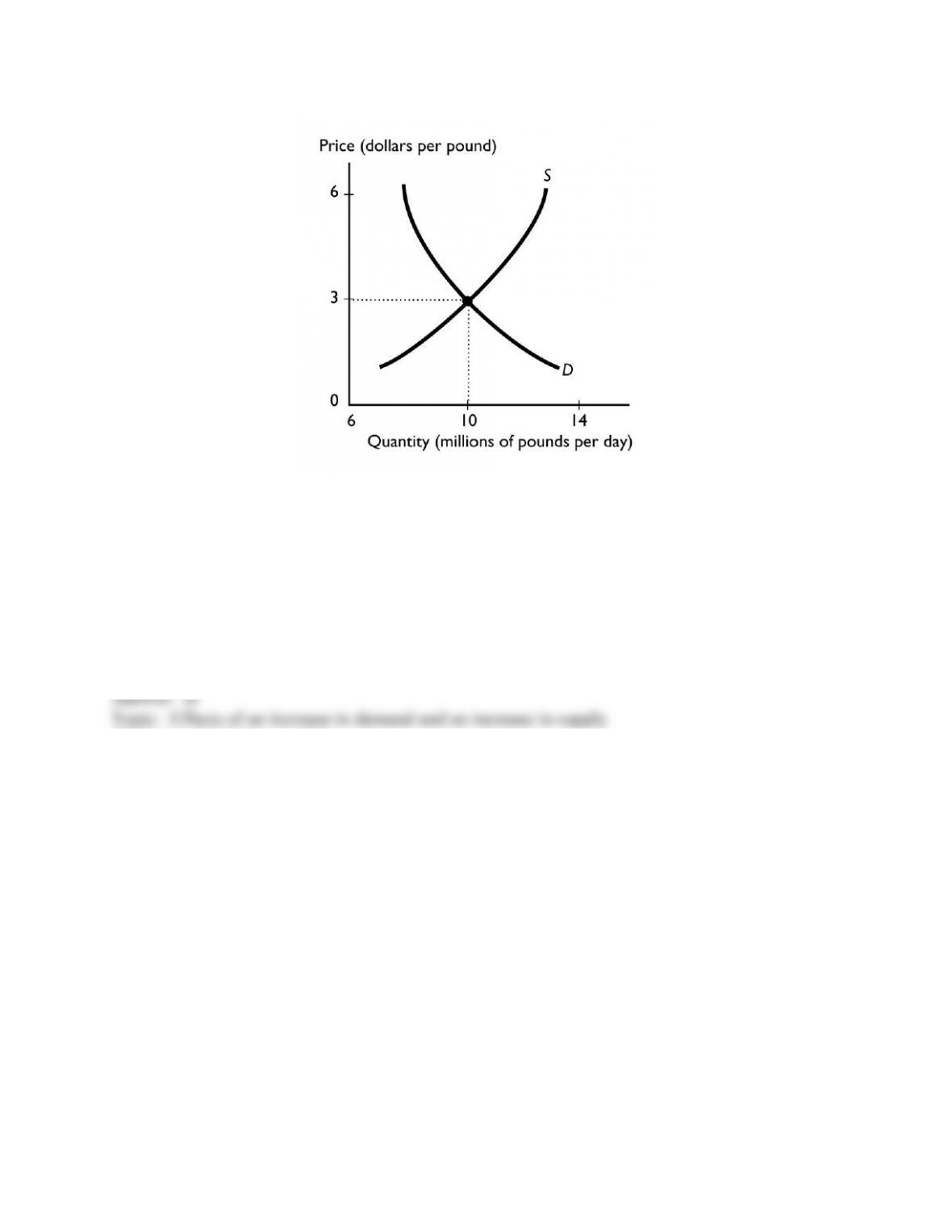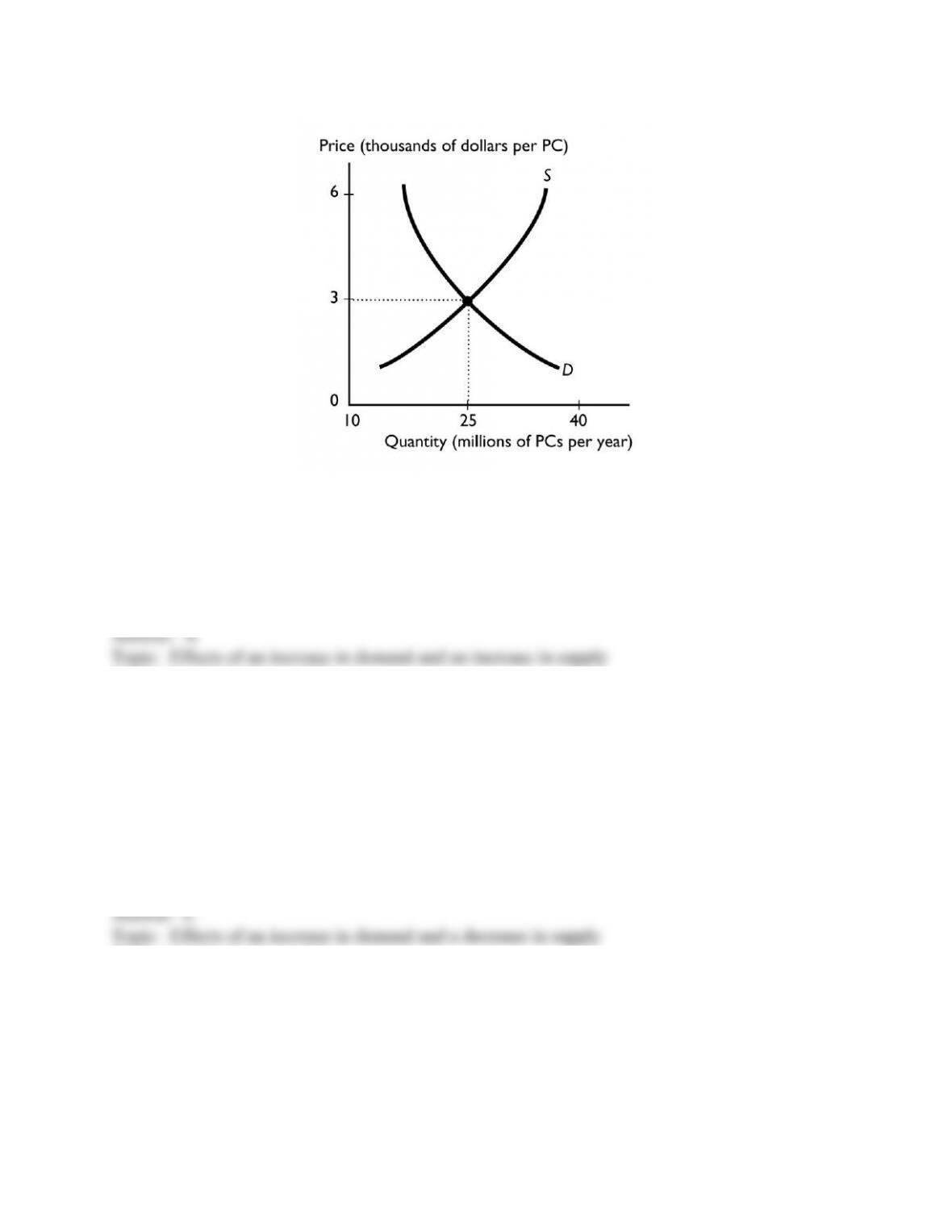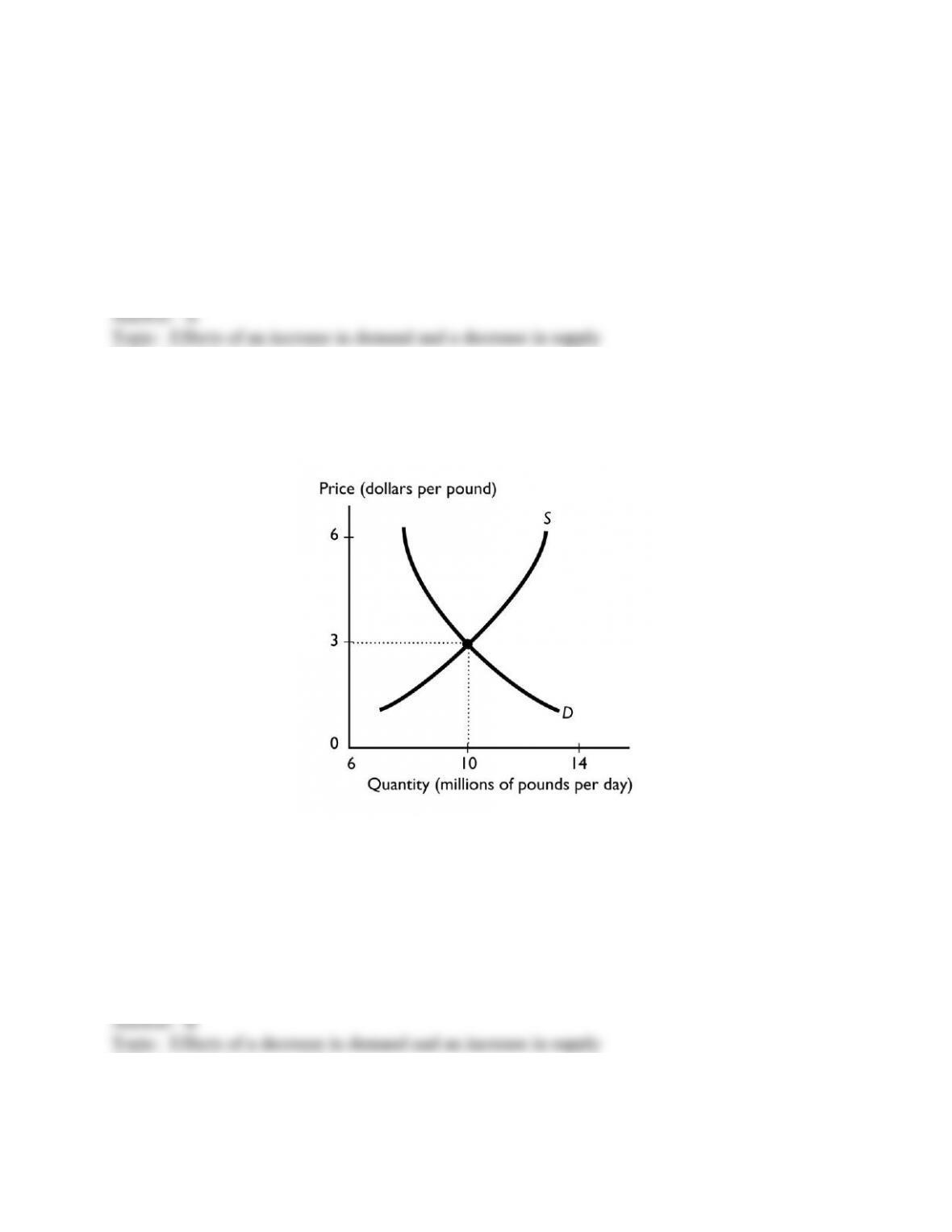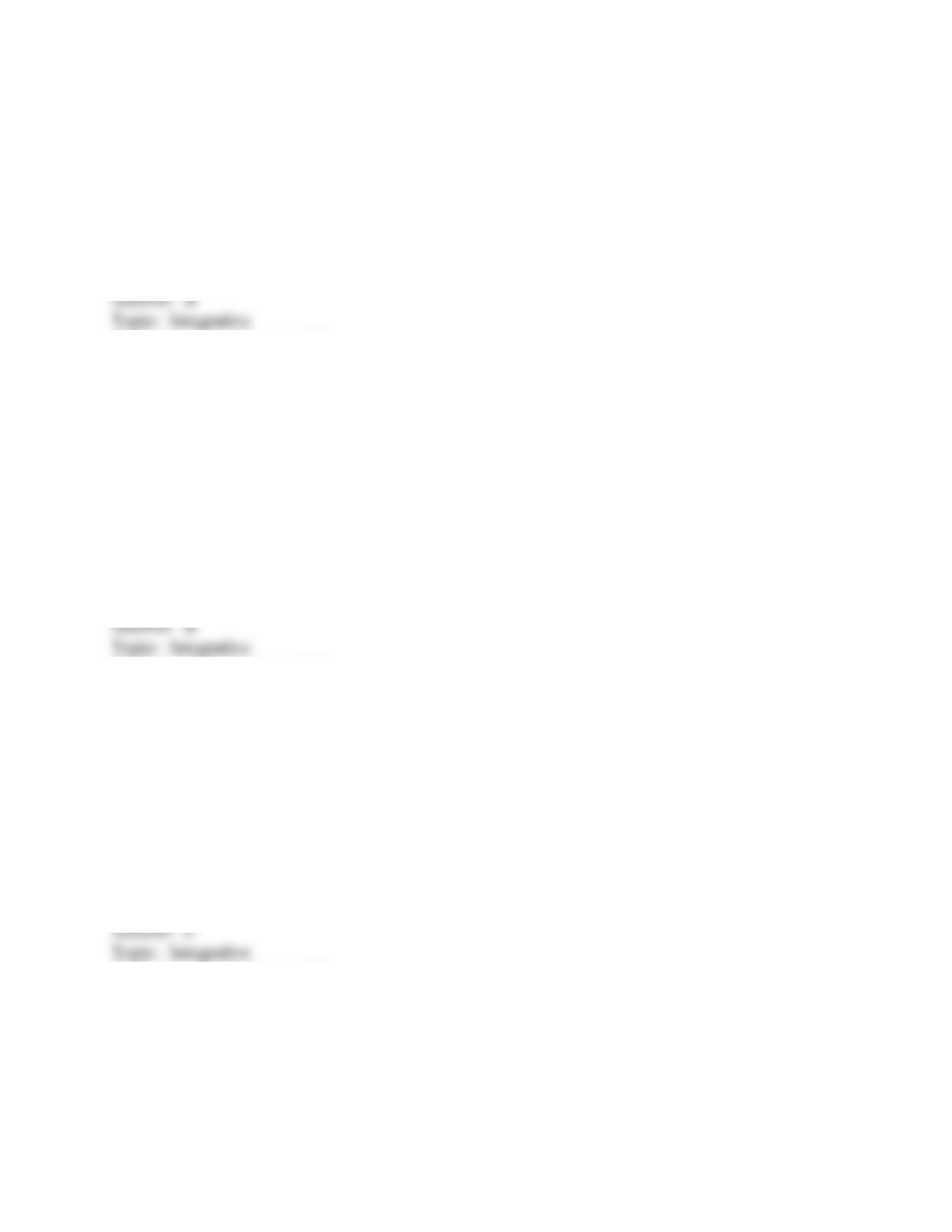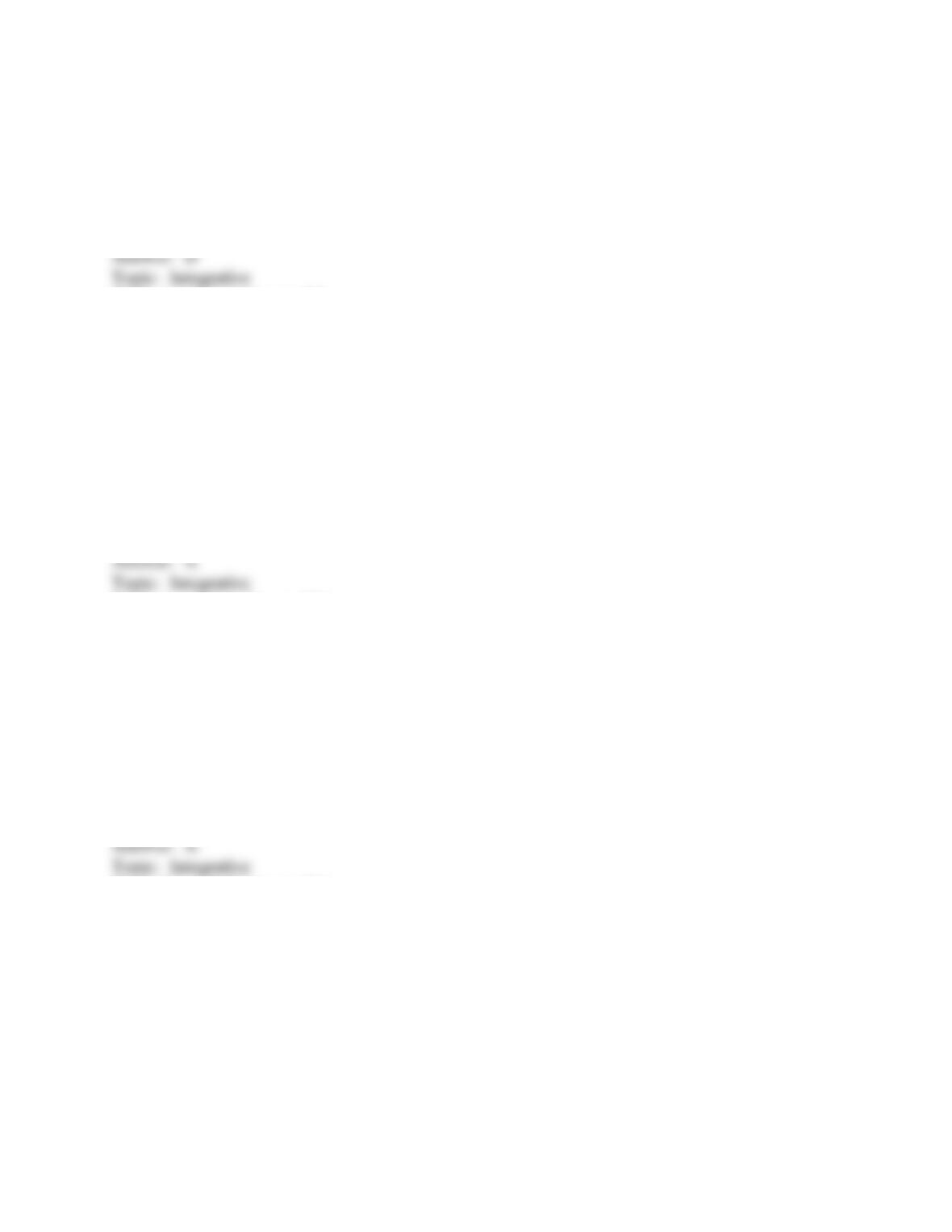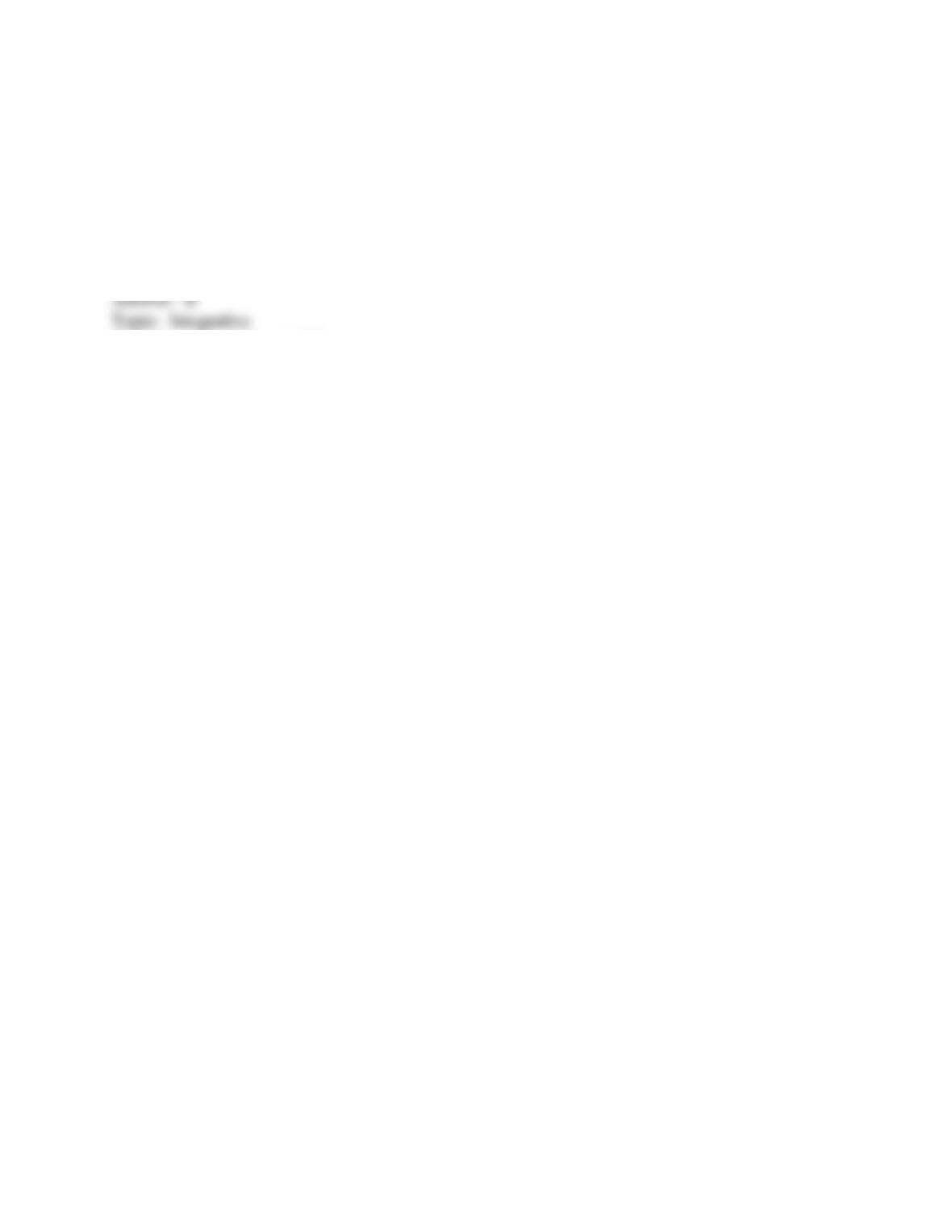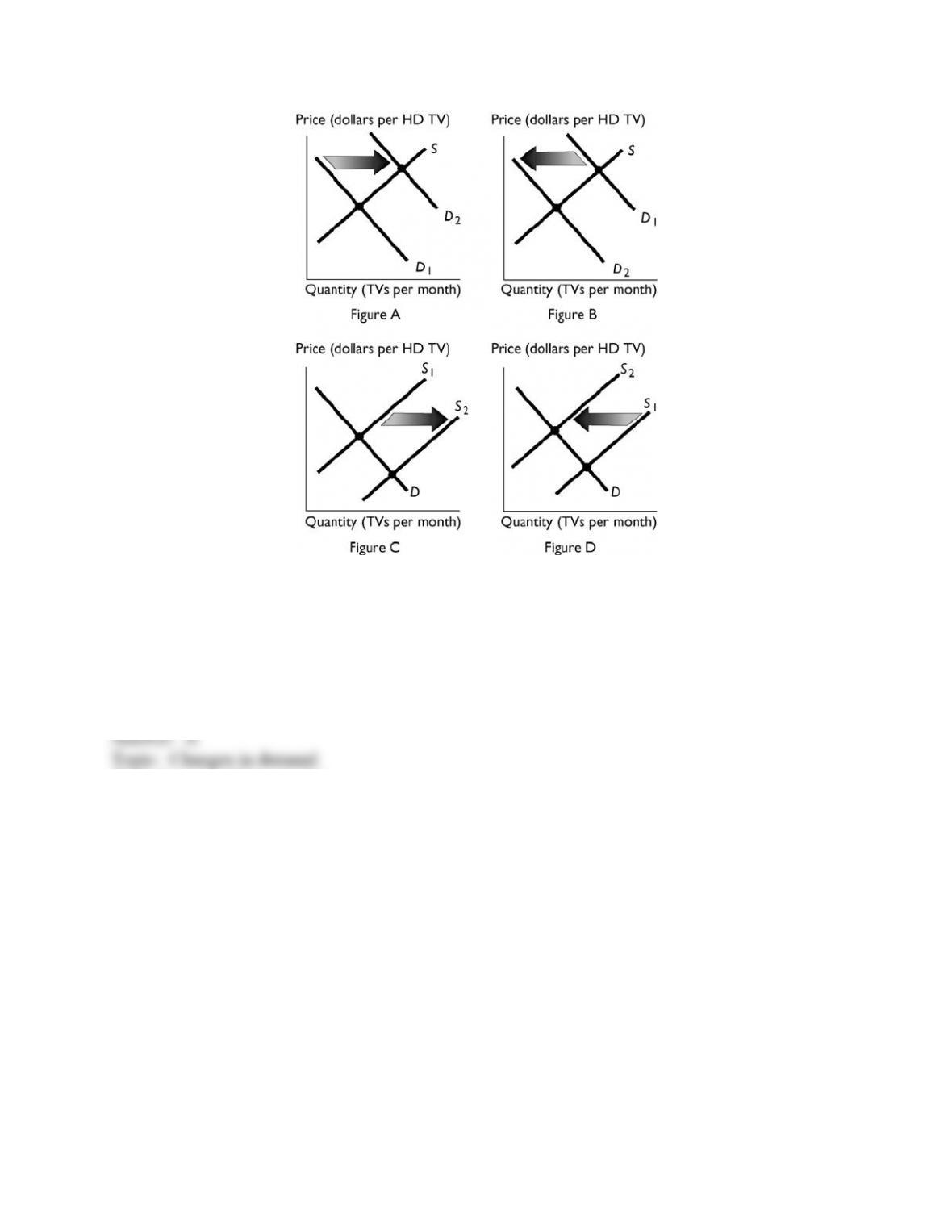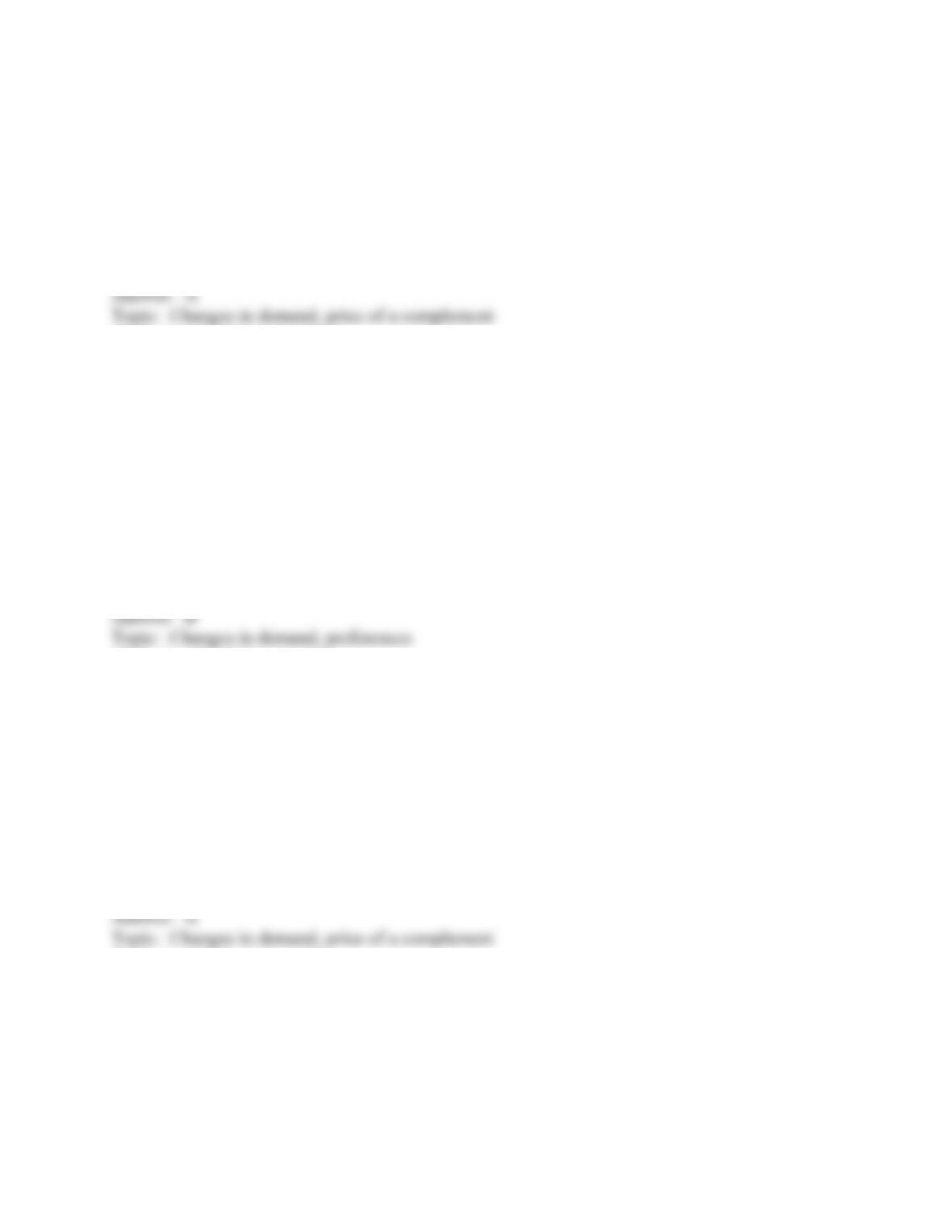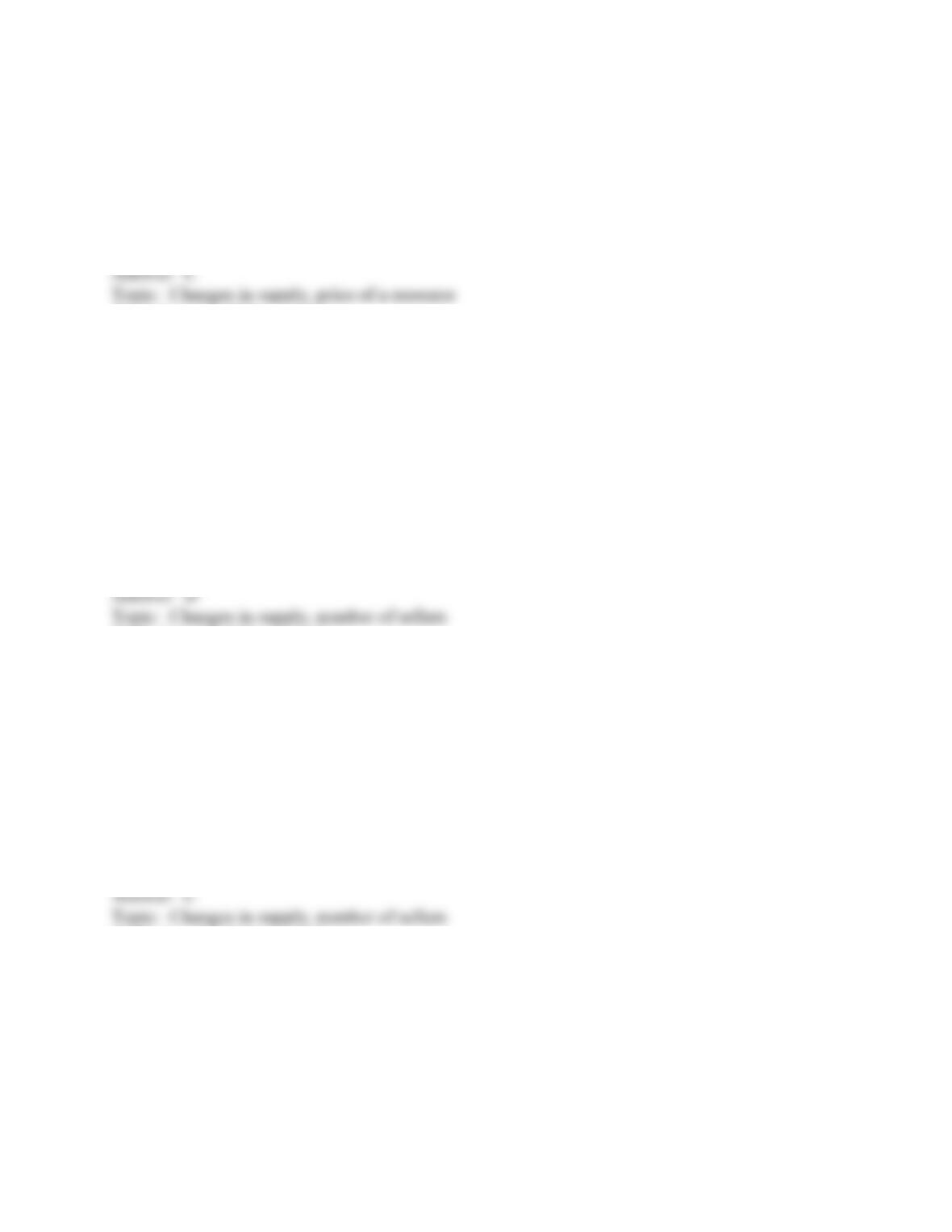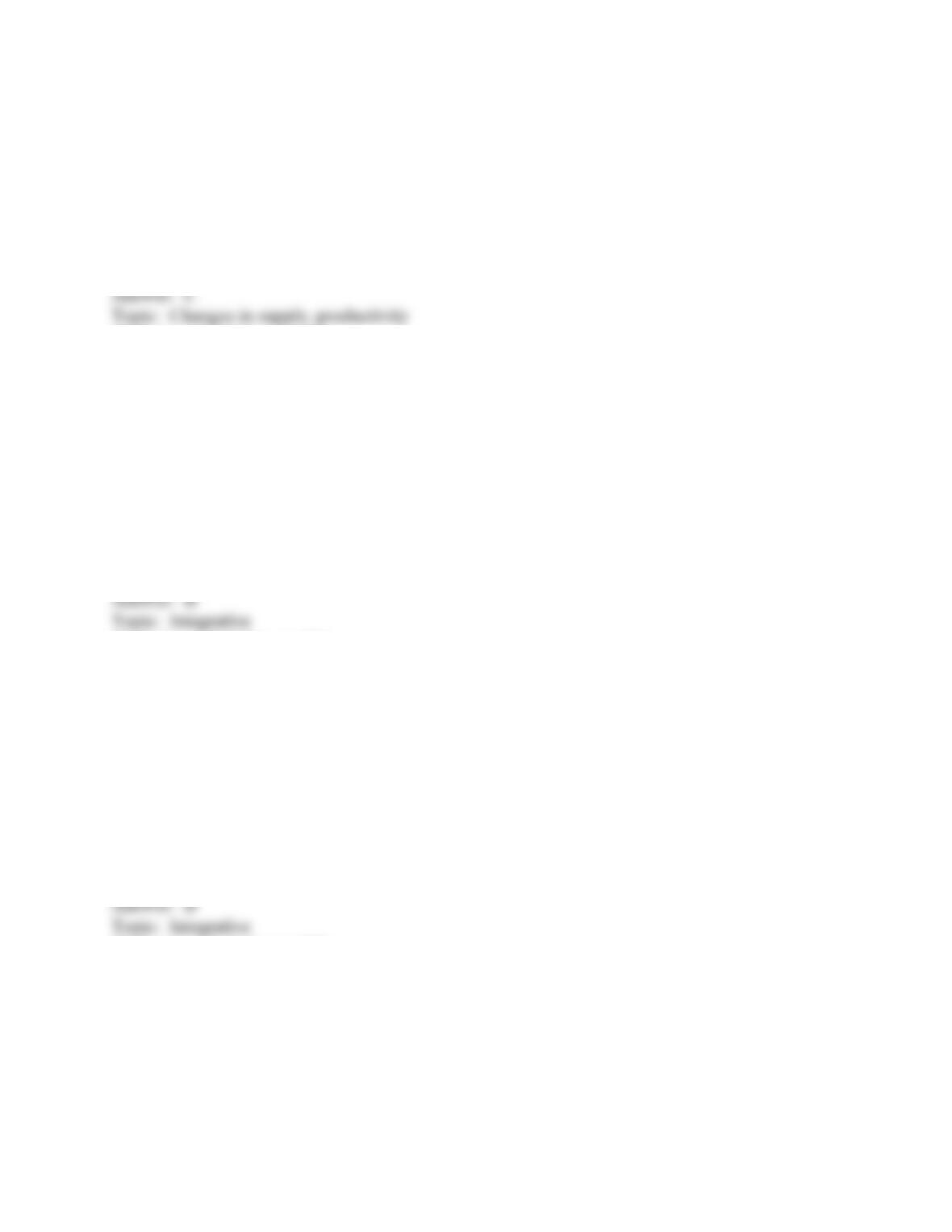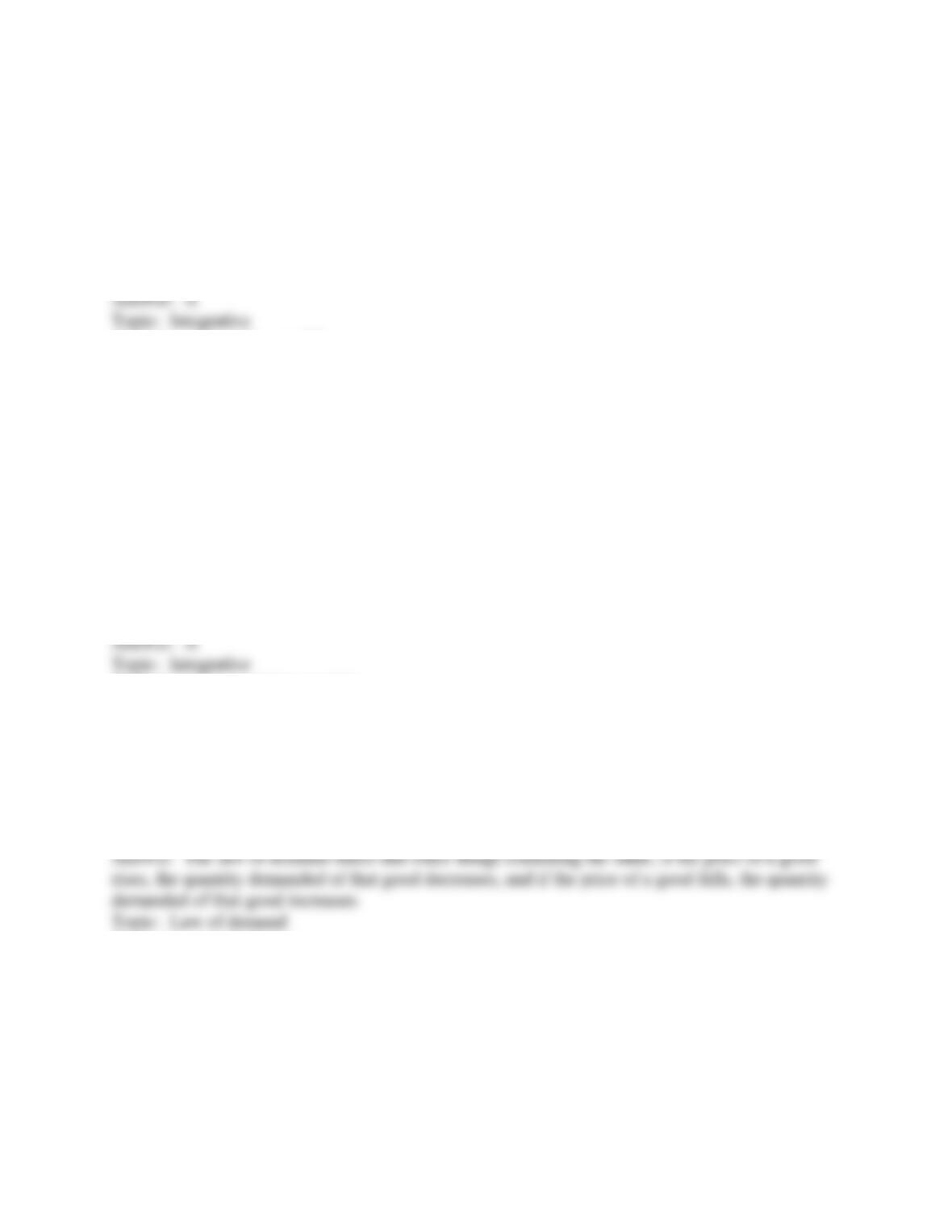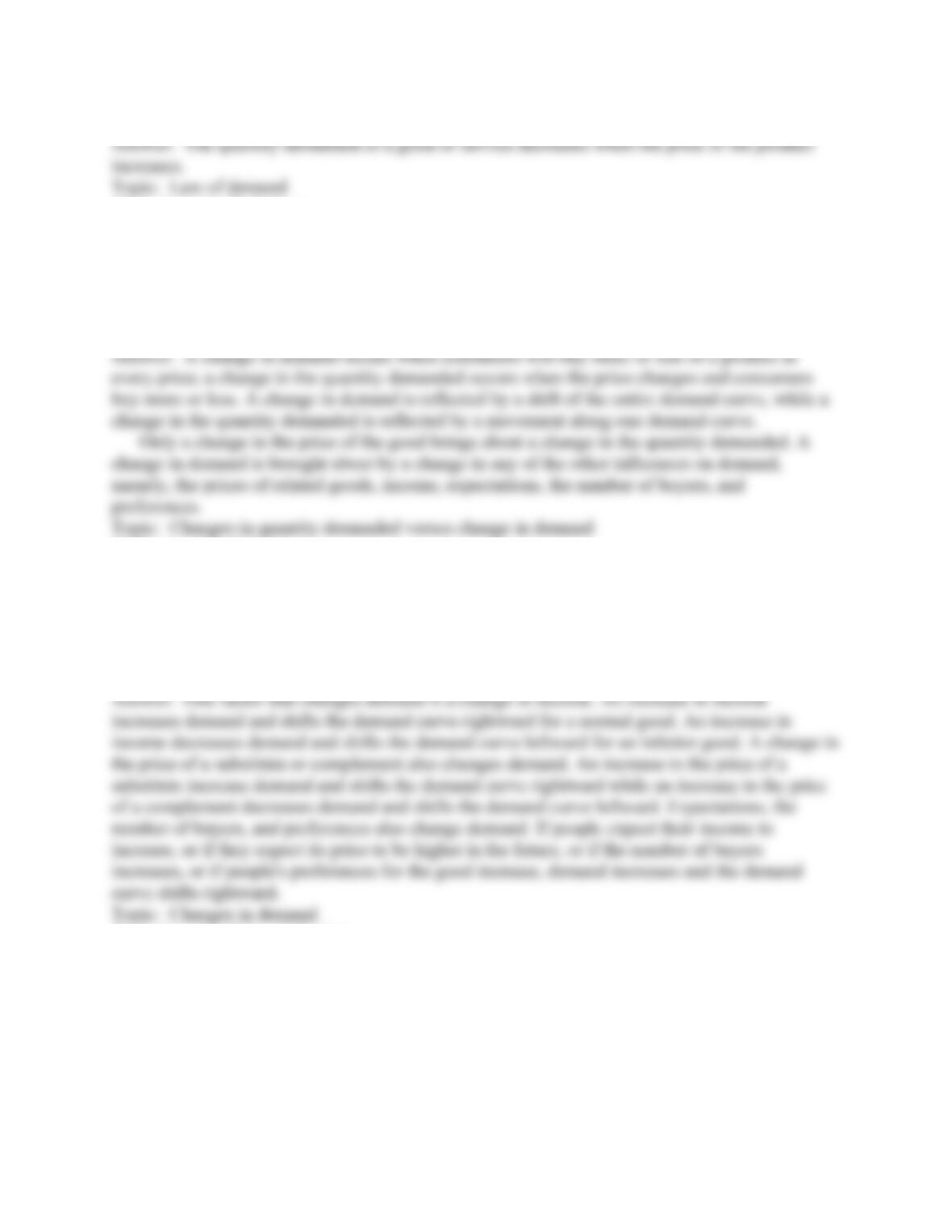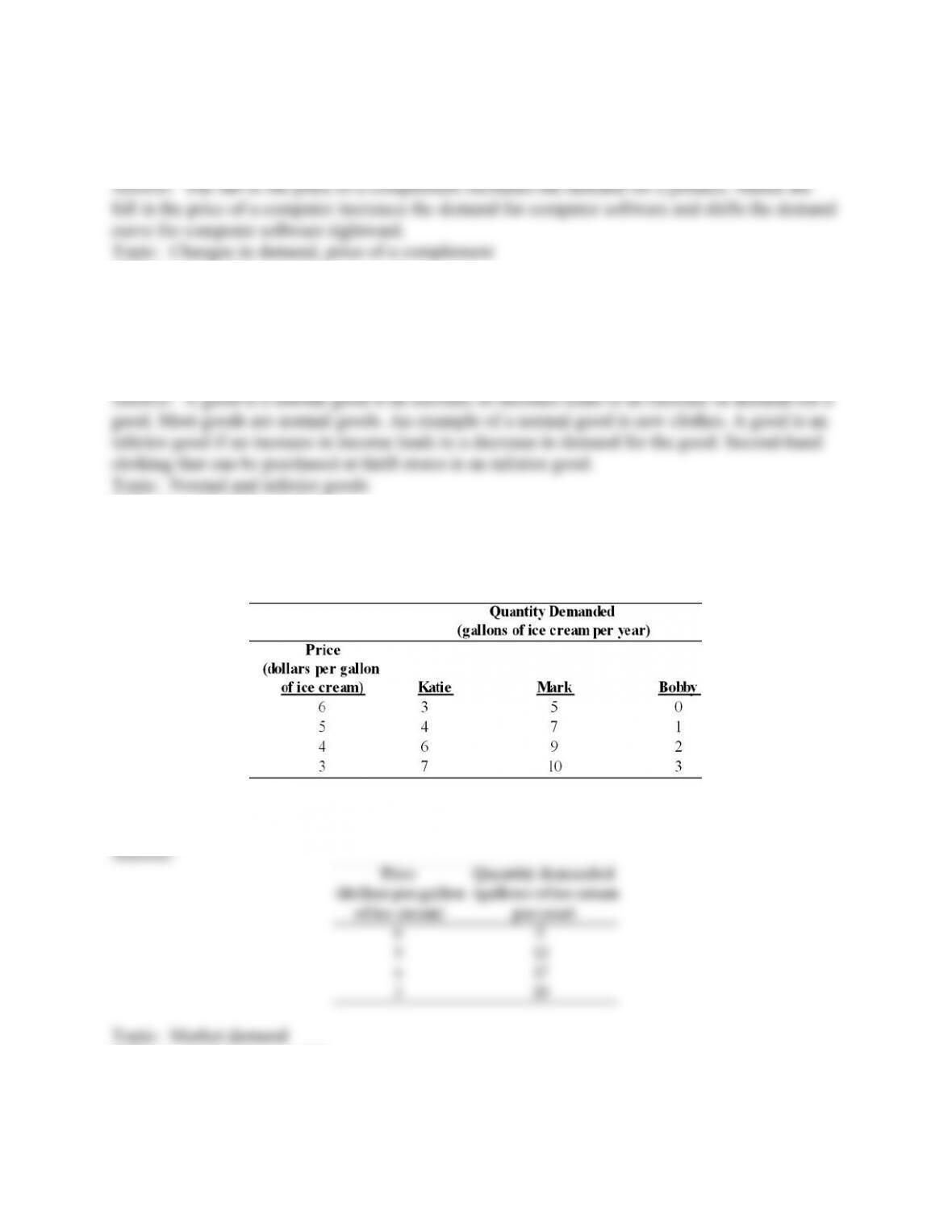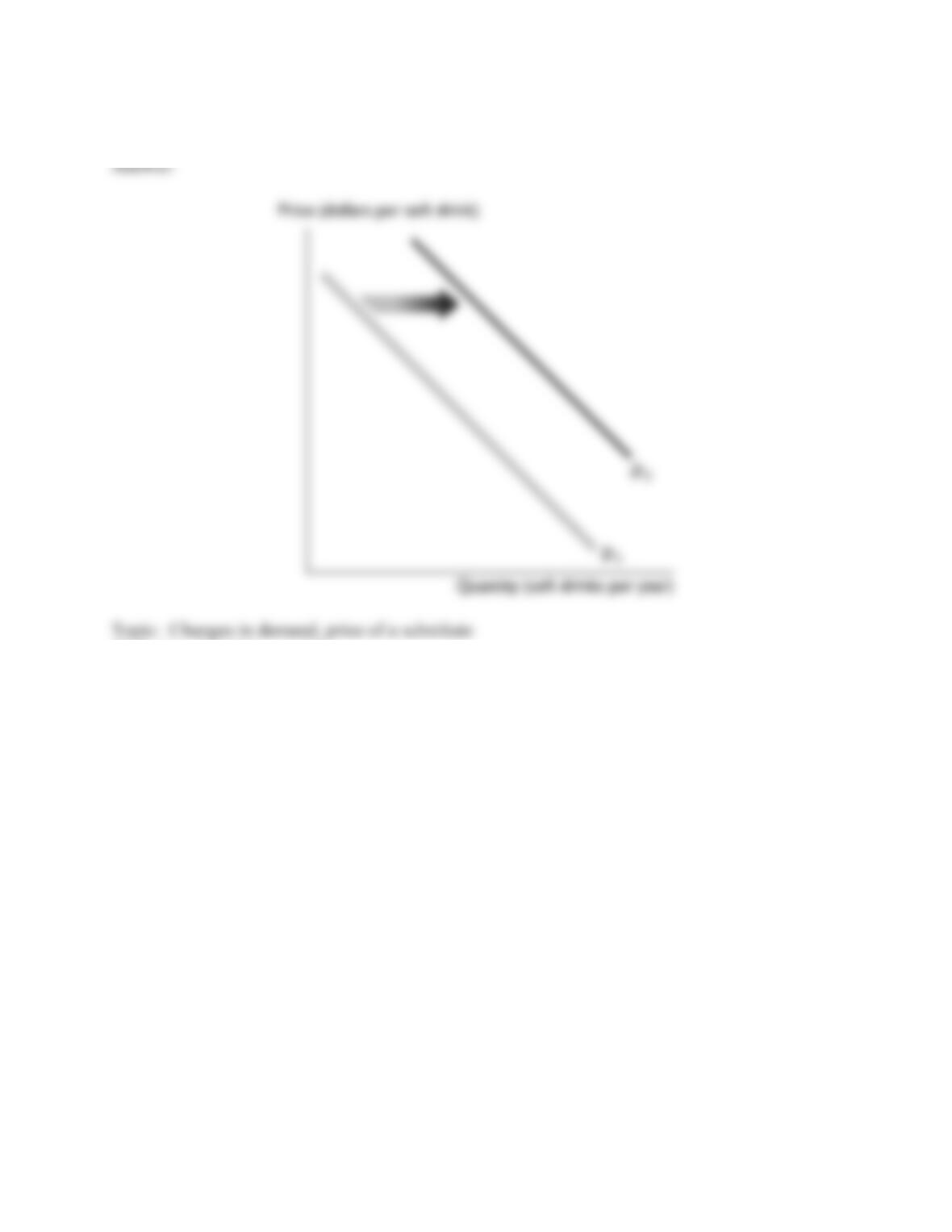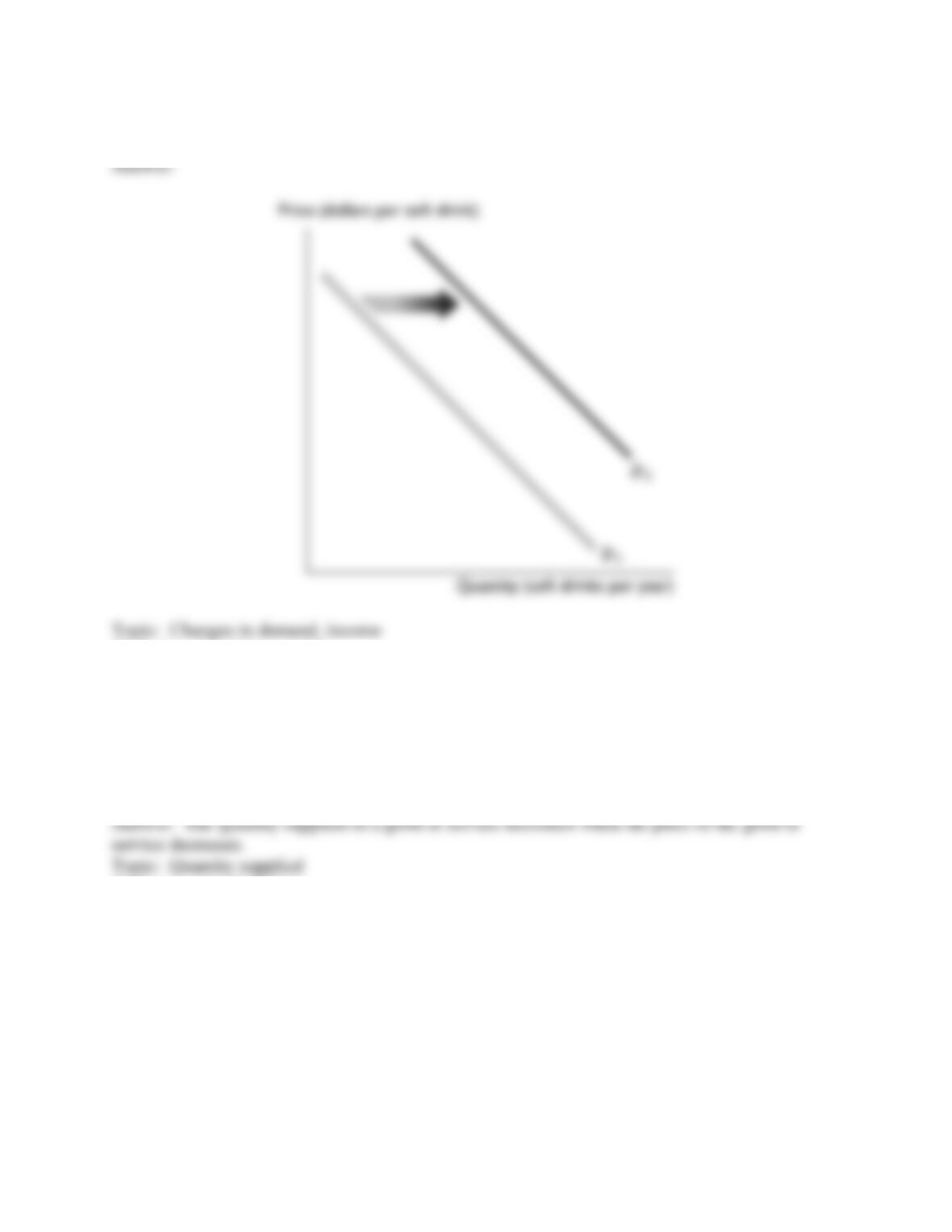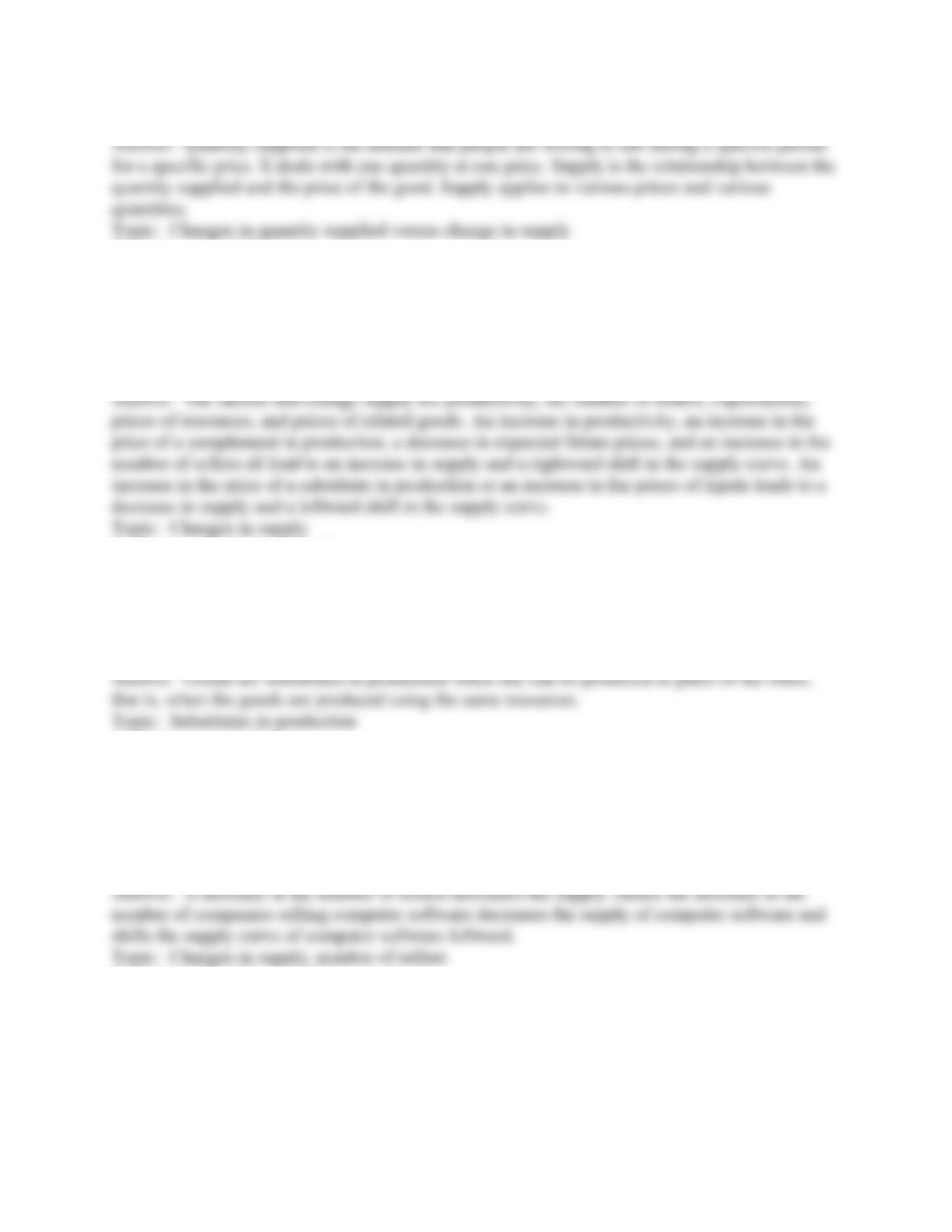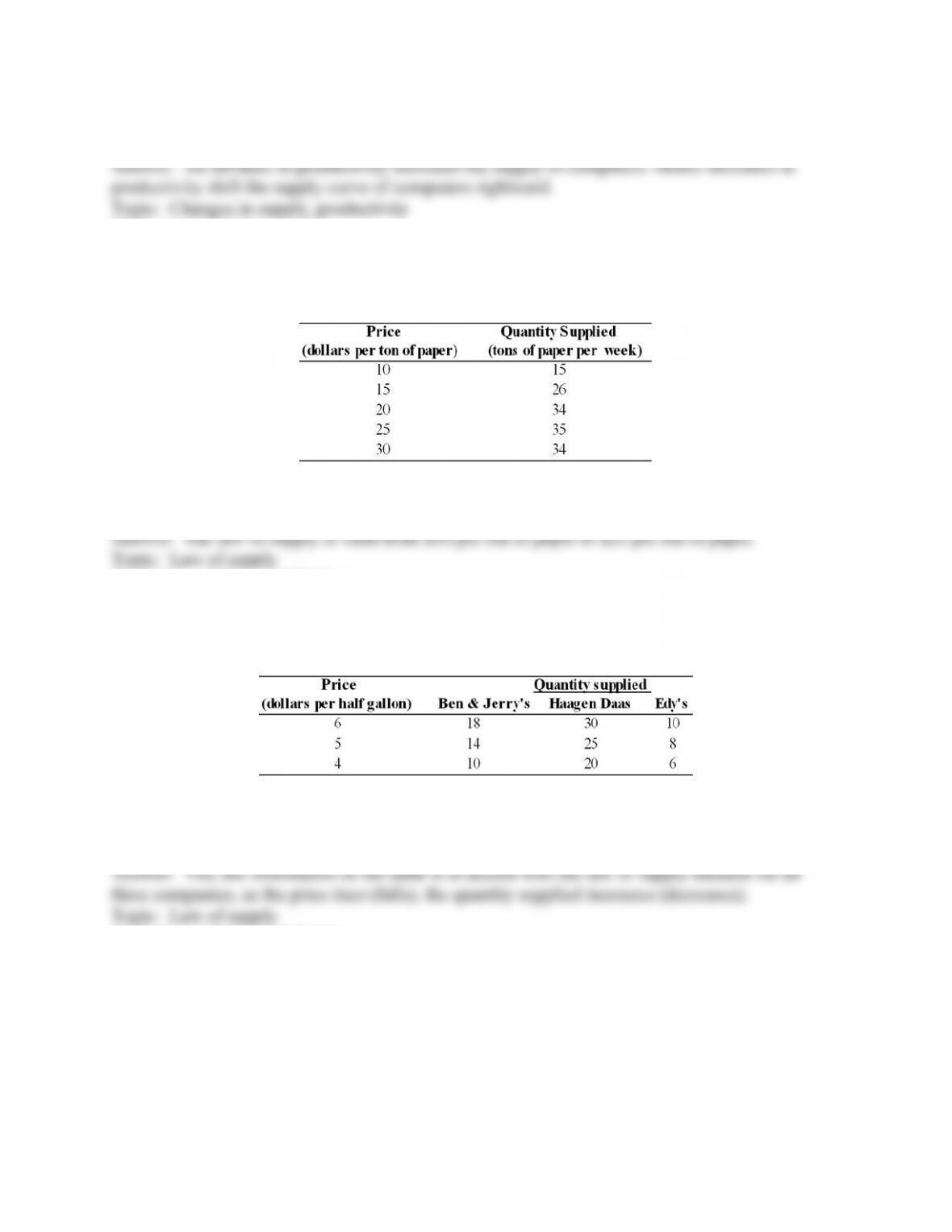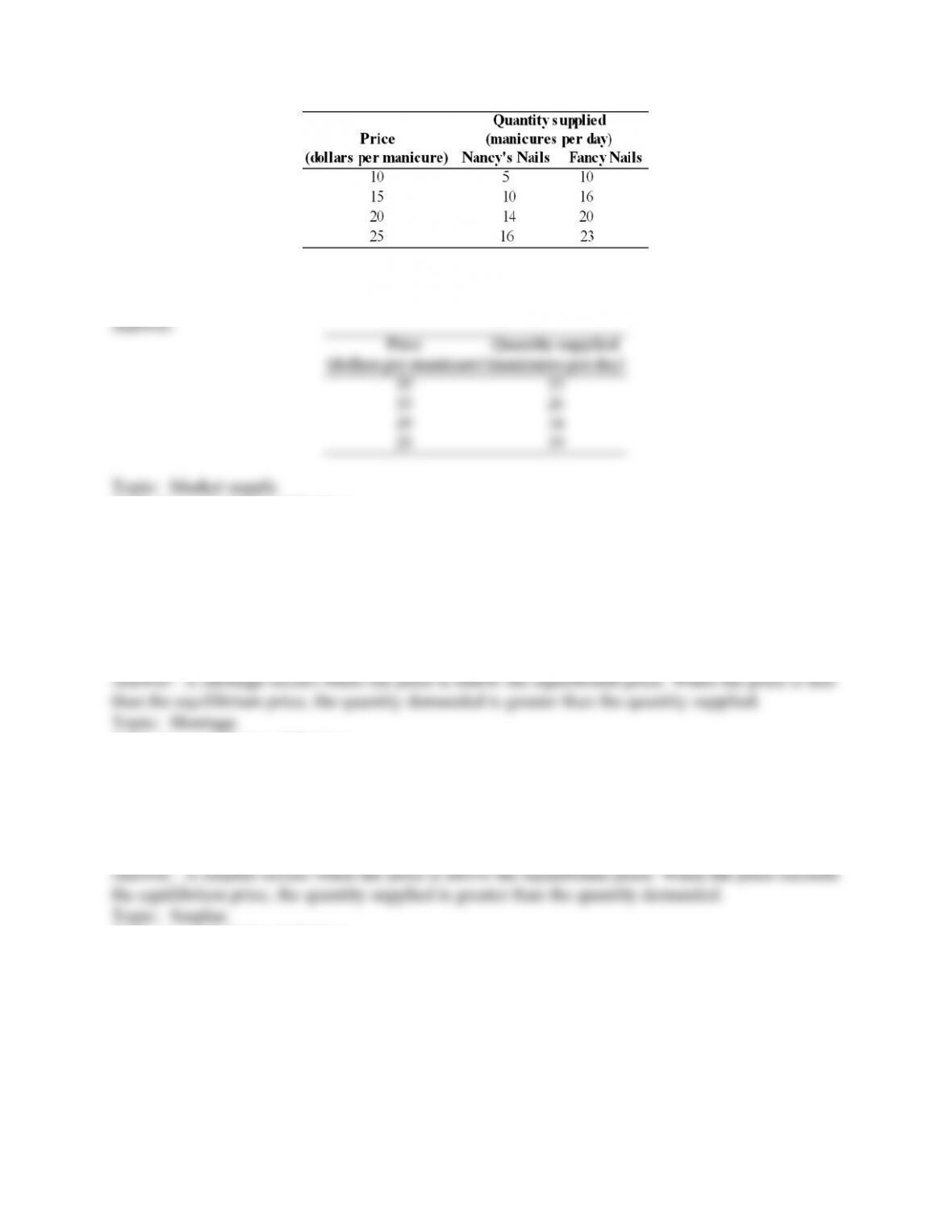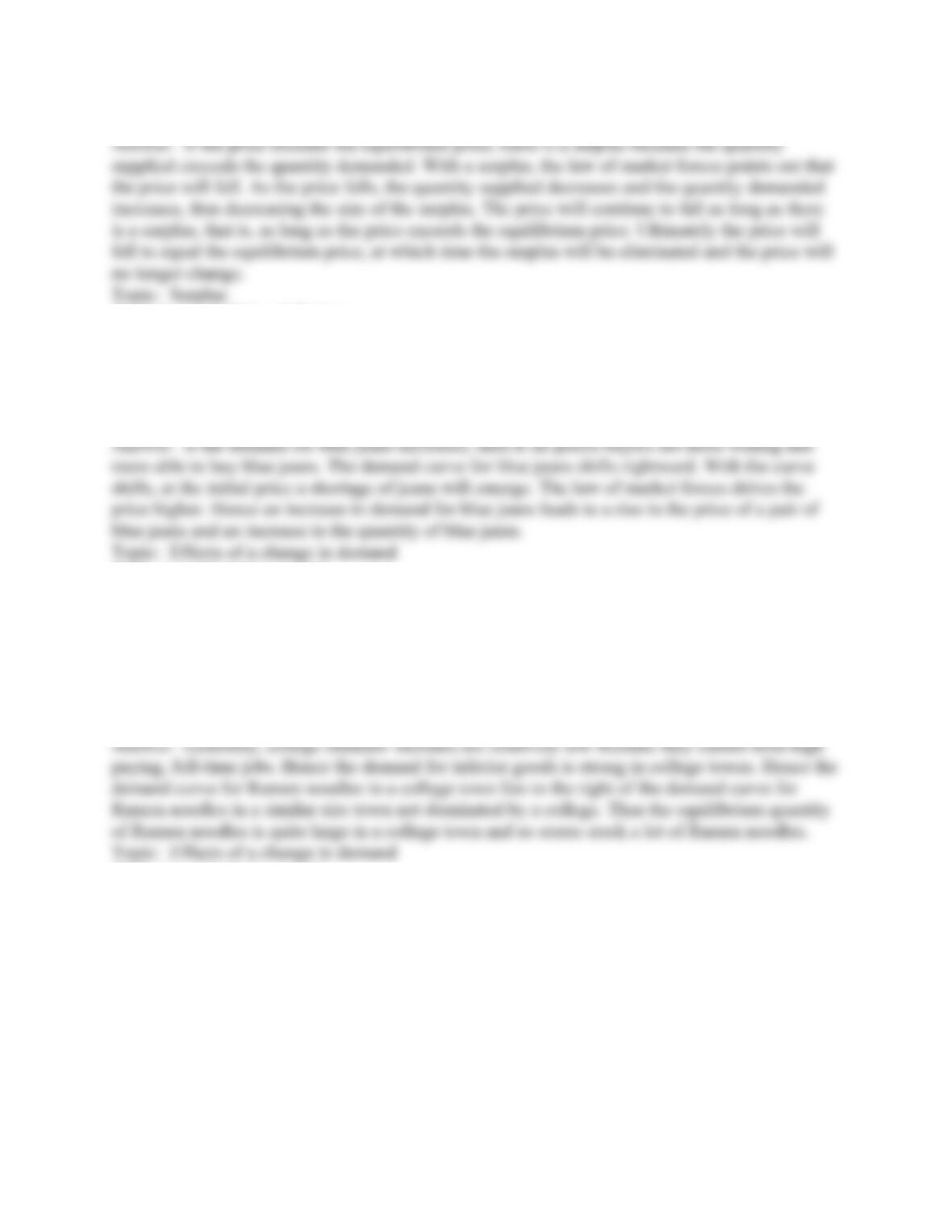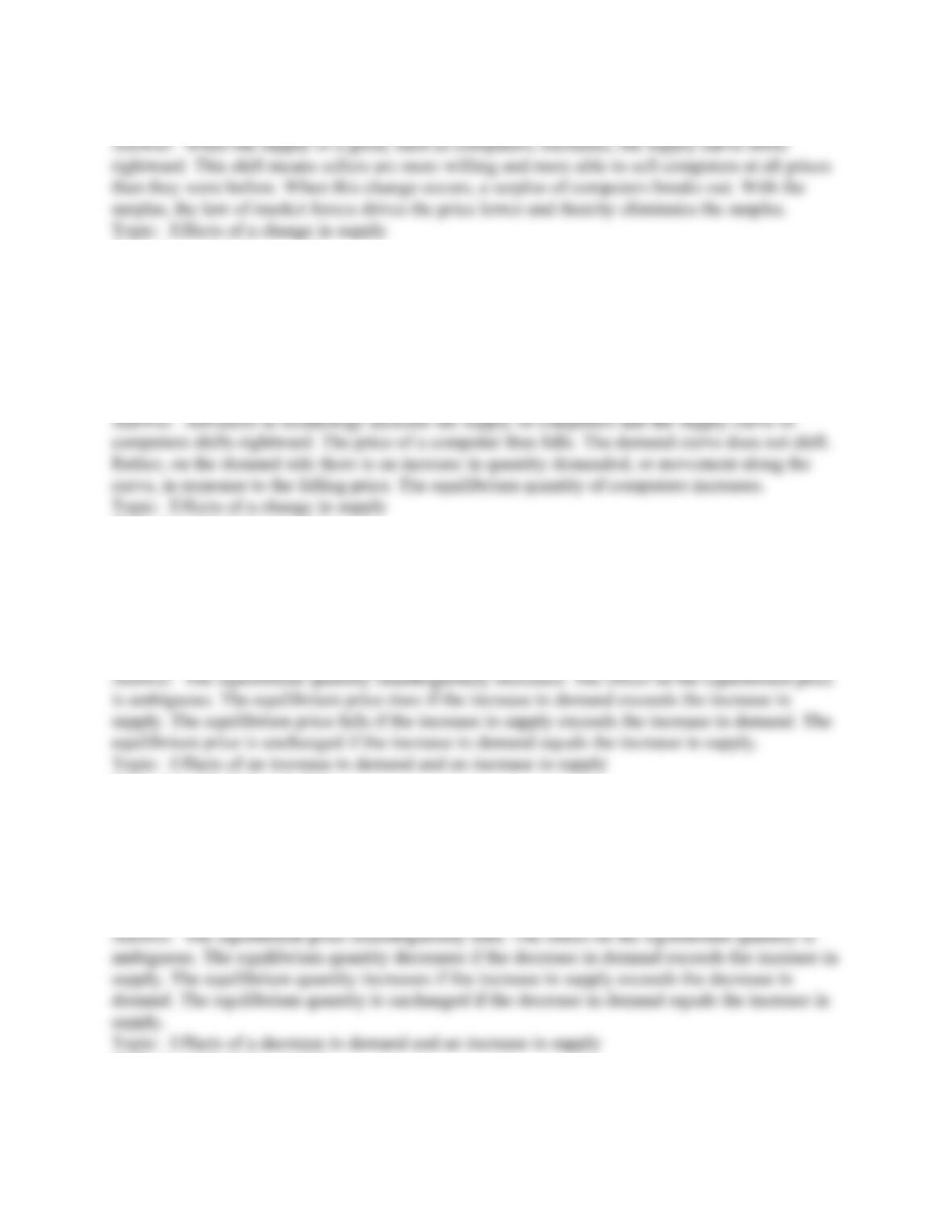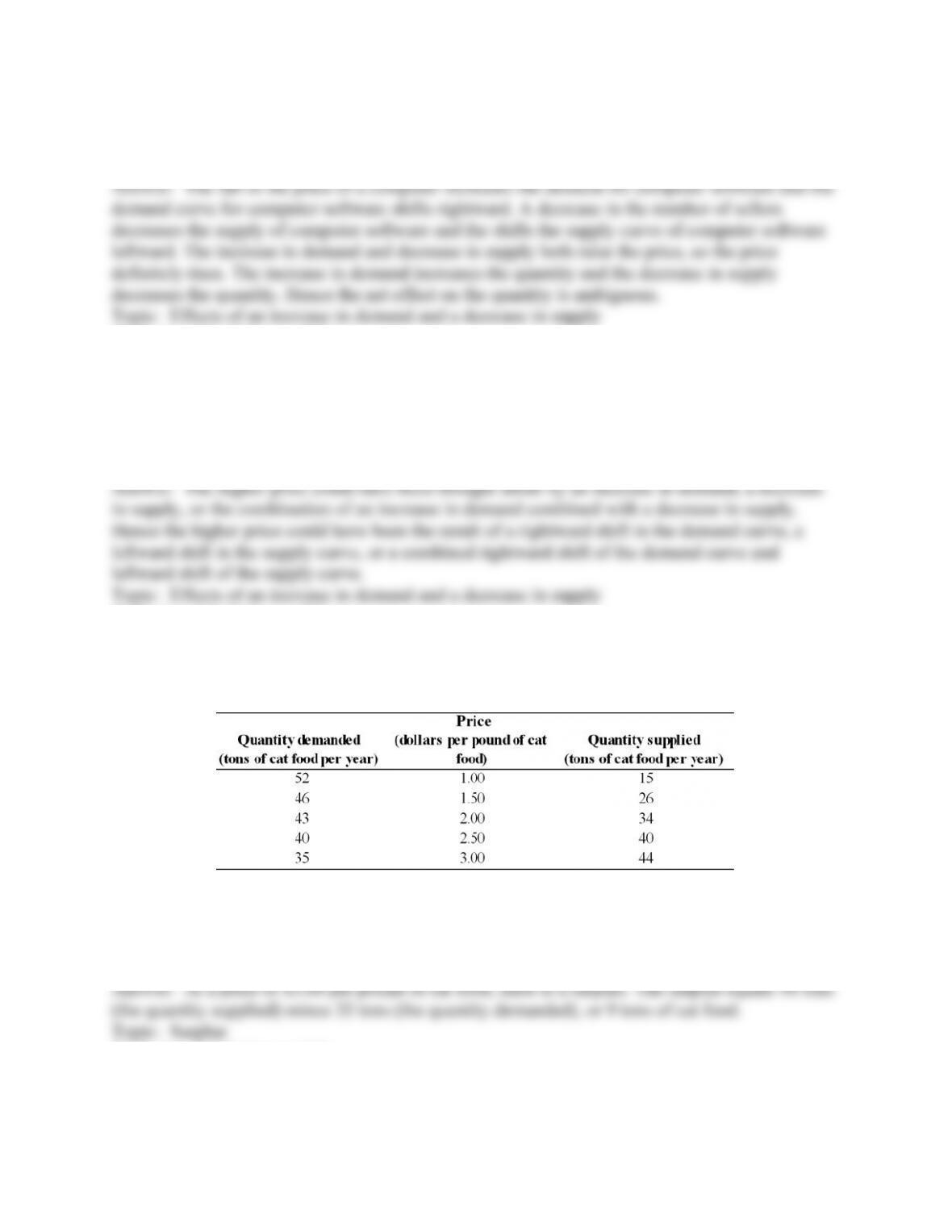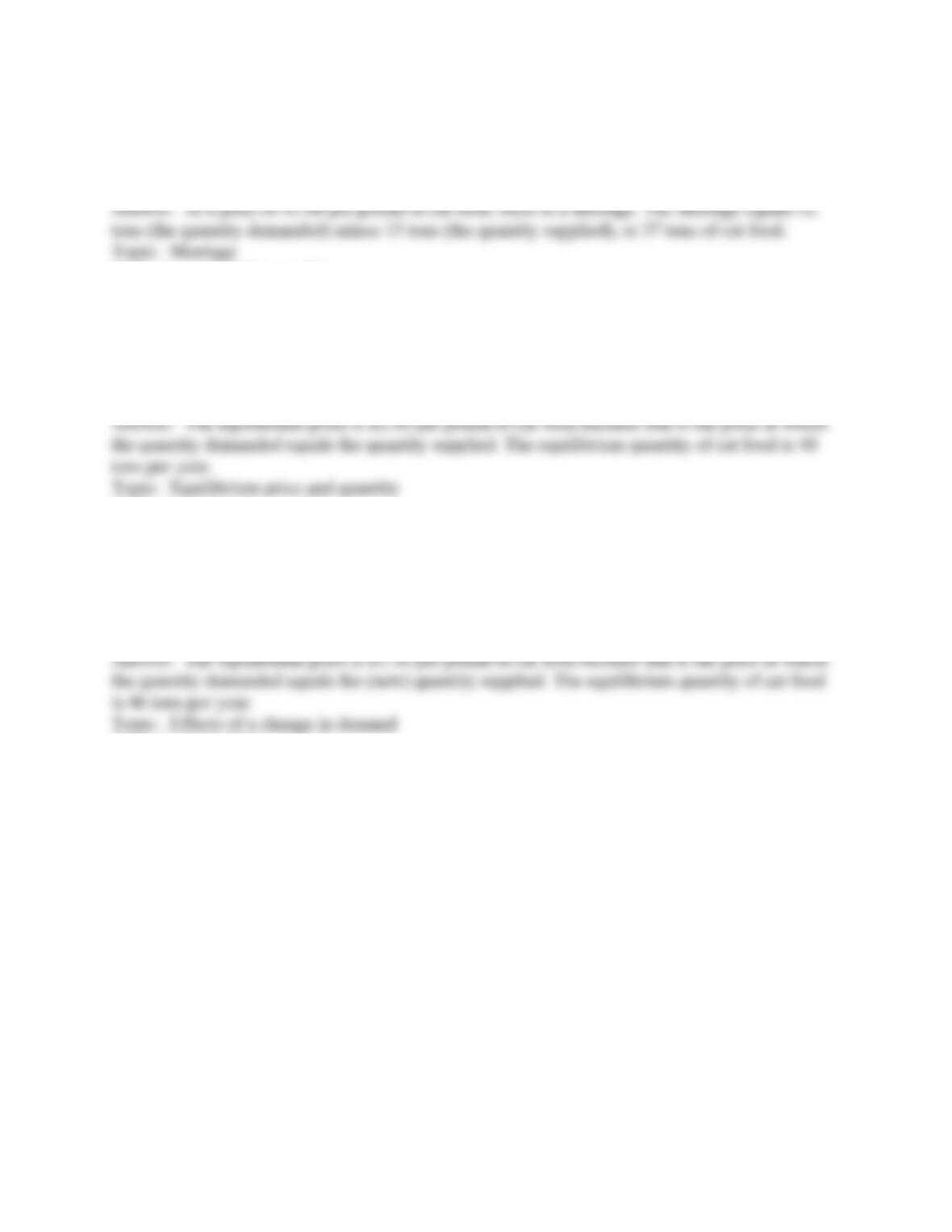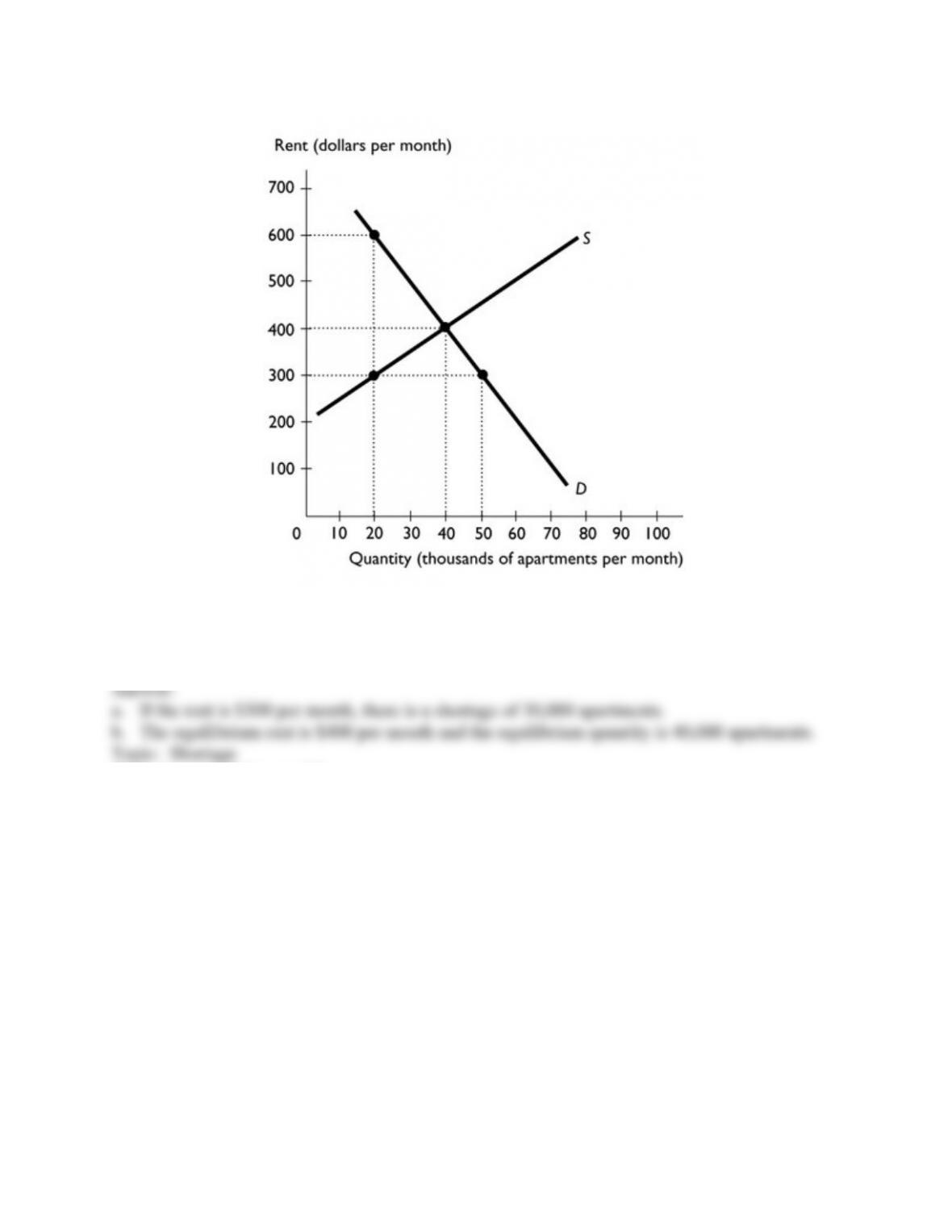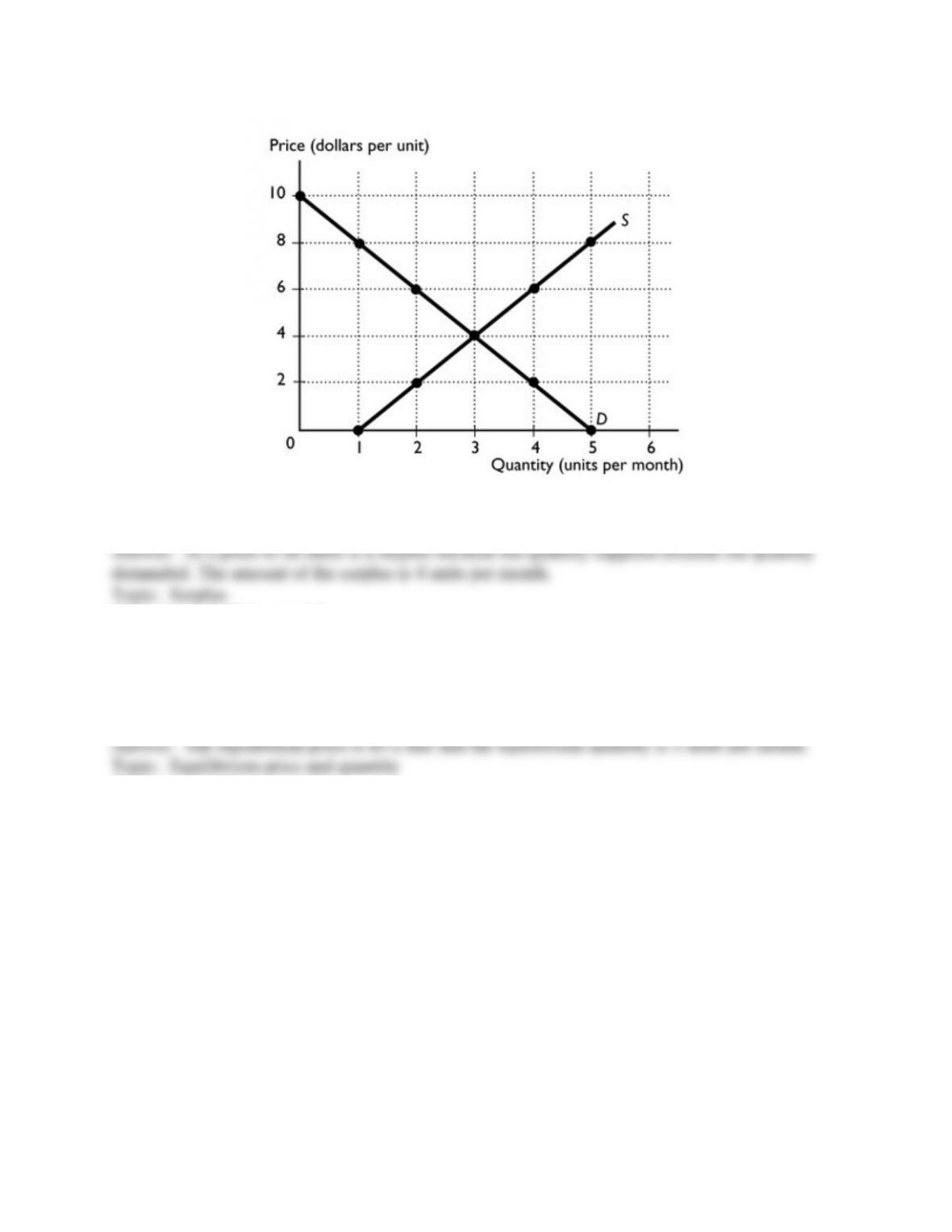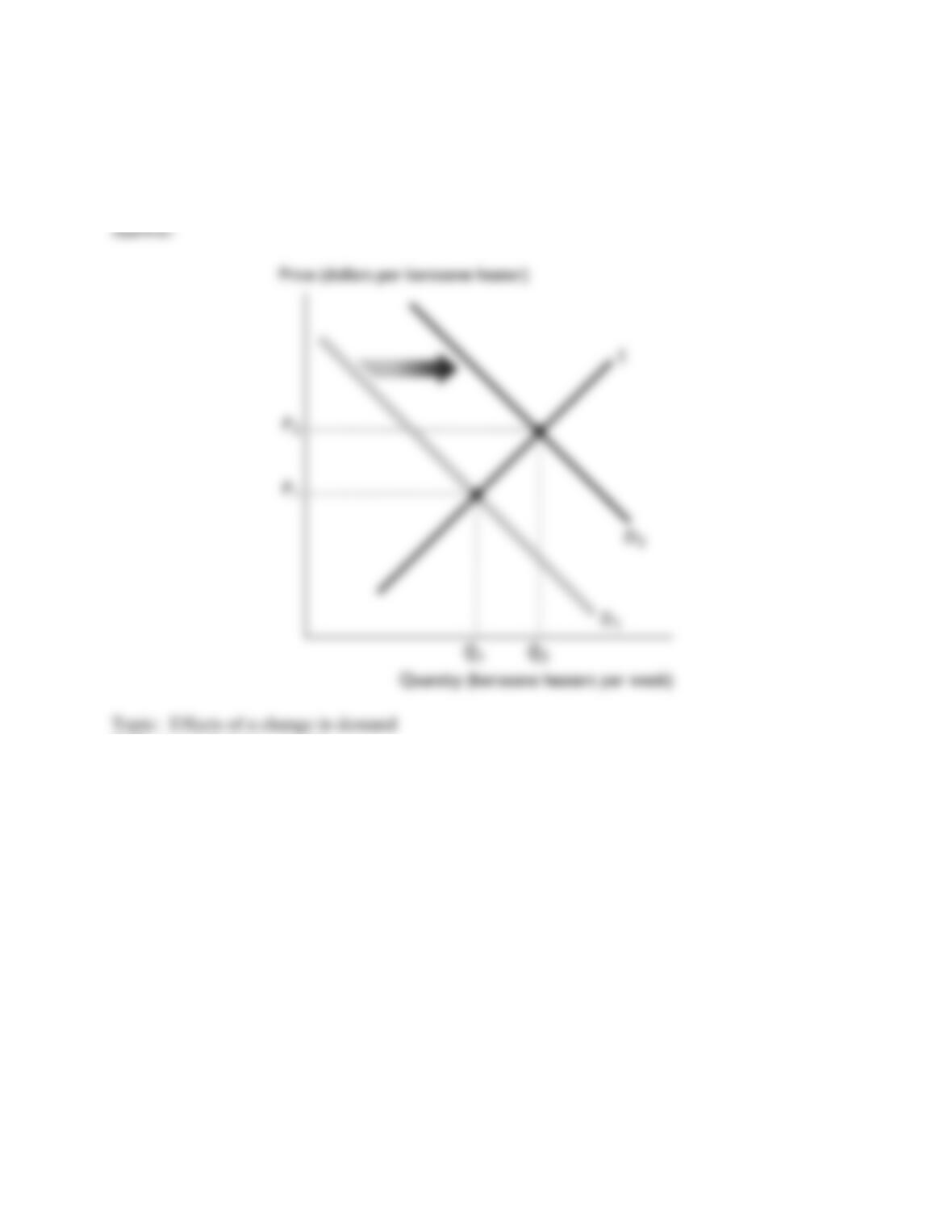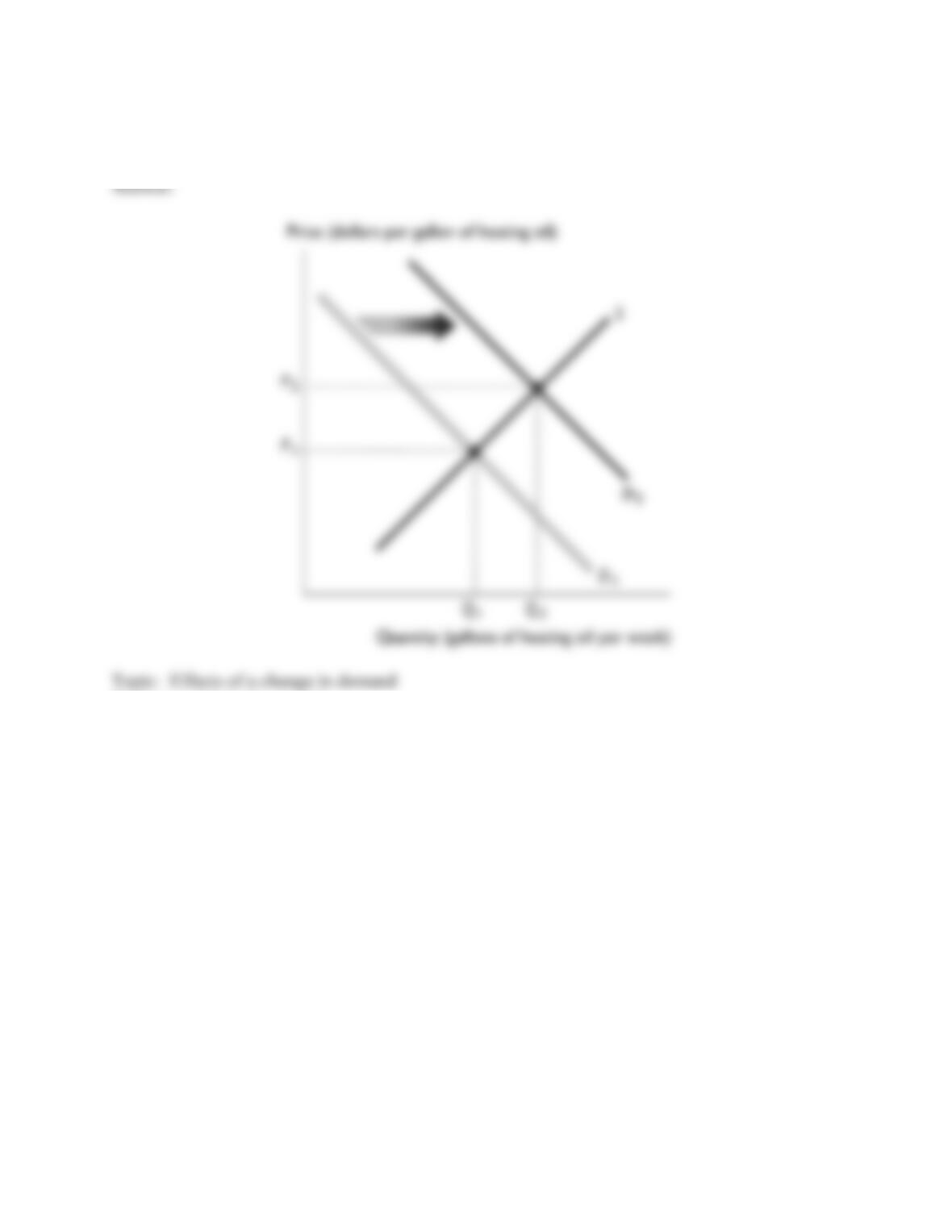90
Copyright © 2011 Pearson Education, Inc.
76) Both the demand for and supply of cars changes in France. You observe that the quantity of
cars does not change but the price rises. Thus, which of the following occurred?
A) Demand and supply increased by an equal amount.
B) Demand and supply decreased by an equal amount.
C) Demand increased and supply decreased by an equal amount.
D) Demand decreased and supply increased by an equal amount.
E) Demand increased by a larger magnitude than supply decreased.
Skill: Level 3: Using models
Section: Checkpoint 4.3
Author: JC
AACSB: Analytical reasoning
77) Suppose that the demand curve for desktop computers shifts rightward and at the same time
the supply curve shifts leftward. Which of the following could have caused these shifts?
A) Desktop computers are a normal good and incomes increased, while more firms entered the
market.
B) The price of a laptop computer, a substitute for desktop computers, fell and the cost of
producing desktop computers decreased.
C) Consumers purchased more computers because of the Christmas season and the labor costs of
producing desktop computers decreased.
D) Desktop computers are a normal good and incomes increased, while the labor costs of
producing personal computers increased.
E) Desktop computers are a normal good and incomes decreased, while the labor costs of
producing personal computers increased.
Skill: Level 4: Applying models
Section: Checkpoint 4.3
Author: SA
AACSB: Analytical reasoning
78) If the demand curve for desktop computers shifts rightward and at the same time the supply
curve shifts leftward, then
A) the equilibrium price definitely rises.
B) the equilibrium price definitely falls.
C) the equilibrium price definitely remains the same.
D) More information is needed to determine the effect on the equilibrium price.
E) the equilibrium quantity definitely increases.
Skill: Level 4: Applying models
Section: Checkpoint 4.3
Author: SA
AACSB: Analytical reasoning

























































































